






With so much commercial kitchen equipment to choose from, making the right choice can be difficult. Not to mention the possibility the equipment soon struggles to meet demand or your business changes course and needs different equipment.
SilverChef’s Rent-Try-Buy solves this problem by allowing you to try the equipment before deciding whether to buy it, upgrade it, continue renting it, or return it if it no longer suits your needs.
Hospitality can be a volatile industry – to succeed, businesses need to be ready to adapt, SilverChef’s Rent-Try-Buy gives you the ability to invest your cash inthe growth of your business instead of tying it up in equipment.












The Peter Mitchell Memorial Golf Day at Windross Farm Golf Course went off without a hitch, thanks to our awesome sponsors and suppliers. Shoutout to our partners, the Graeme Dingle Foundation
Auckland, for helping us raise funds for Kiwi Can and the Peter Mitchell Memorial Scholarship.
Last year was epic, and this year was even better. We kicked things off with a brunch BBQ at 11 am, followed by an Ambrose shotgun start tournament. Before tee off, there was some practice on the putting green as golfers tried out the bottle putt - some very happy golfers who picked up a mystery bottle or if they
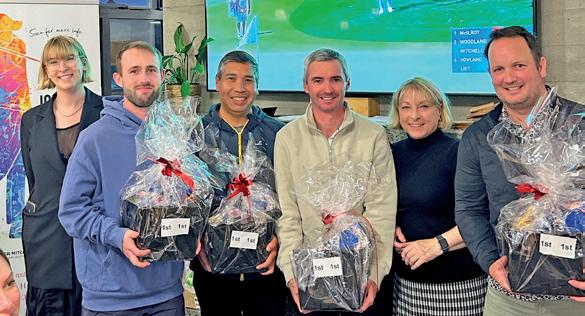
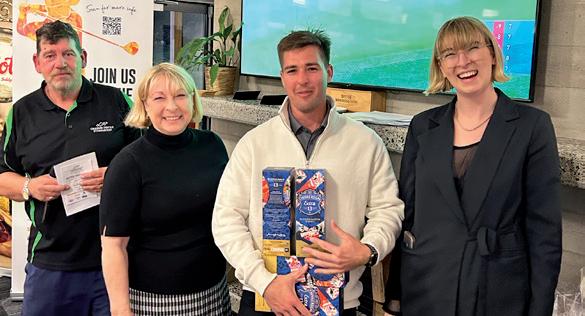



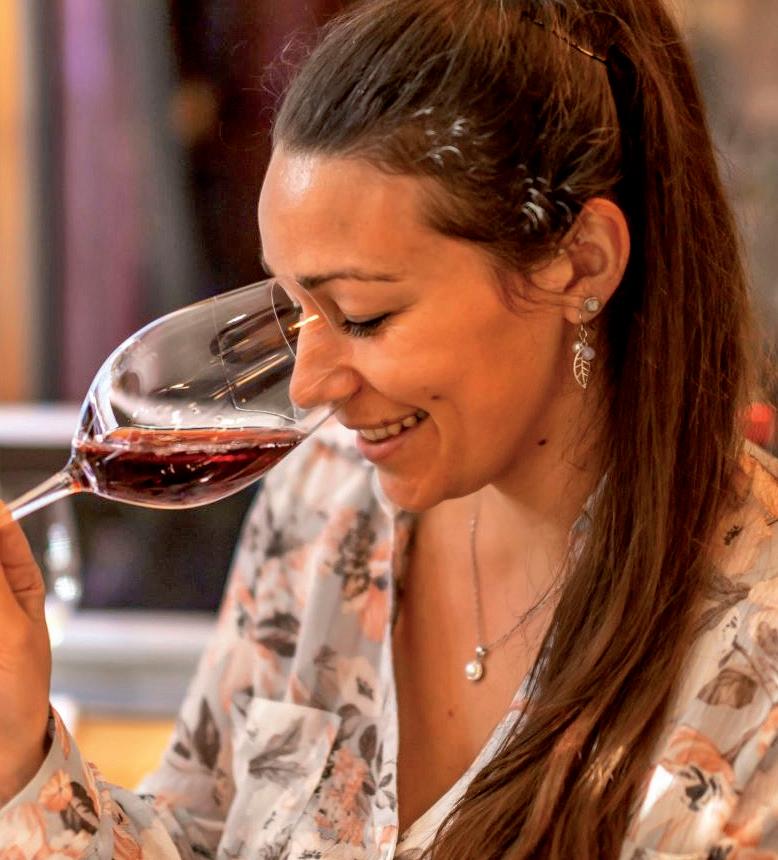
missed the putt getting a Fireball Cinnamon Whisky Mini - a little something to keep the cold out!
A new addition this year was the coffee cart from our friends at Alternative Dairy Co, a welcome addition on the day. A special thank you to Stoddart NZ for picking up the bar tab and of course to Ghiotti for sponsoring an excellent buffet dinner.
After the rounds, we met up at the clubhouse bar for a cold one before the prize
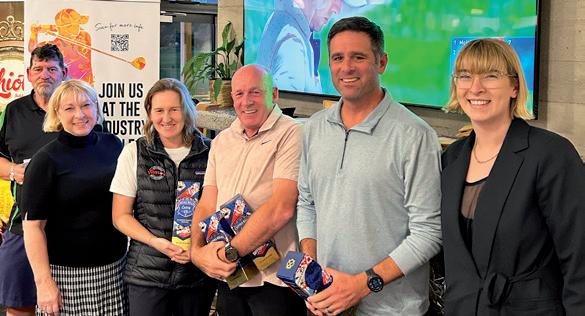
giving, dinner and auction. Congratulations to our winning golfers - it was a close call with three teams coming in with equal scores, but our MC Scott MacKay sorted out the winners and runners up.

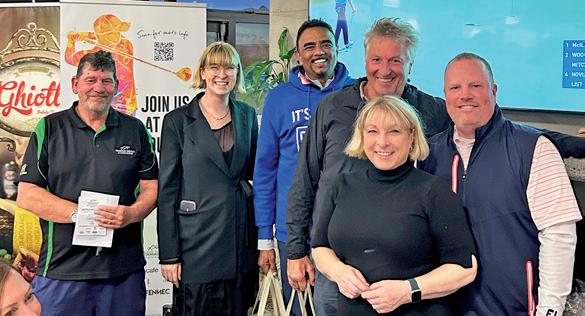
Huge thanks to our golfers, sponsors and suppliers and the team from Windross Farm Golf Course for making it all happen. We couldn't have done it without you.


































Wendy's New Zealand has been bought out by Flynn Group, an American-based global franchise operating company, for an undisclosed sum.
The chain was put up for sale in 2022 by the Lendich family of West Auckland, who had originally launched it in New Zealand in 1988. The sole franchisee of the Wendy's Brand in New Zealand, Wendco, was purchased by Flynn Group.
Flynn Group has expanded its global presence in recent years, most notably the acquisition of Wendy's and Pizza Hut restaurants in Australia. The group currently owns and operates over 2700 consumer-facing businesses across Applebee's, Arby's, Taco Bell, Panera, Pizza Hut, Wendy's and Planet Fitness in the USA, Australia, and New Zealand. Annually, Flynn Group generated more than USD 4.5 Billion in sales, and has recently announced plans to open 200 additional Wendy's restaurants across the Tasman by 20234. Globally, Flynn Group employs over 75,000 people. Read more here
AUSTRALIA | A free pop-up restaurant featuring dishes made only with Woolworths Own Brand is set to open.
Woolworth’s Table will open in Sydney for a week in late May before opening in Brisbane for a week in early June.
The menu has been crafted by popular Australian TV cook Hayden Quinn, and will only feature products that can be bought from Woolworth’s own in-house brand, including its high-quality COOK range.
Every evening the event is on, a range of dishes will be served to showcase to guests how they can create restaurantquality meals with everyday ingredients. On average, Woolworths Own Brand products are priced 30 cents cheaper than similar brands. Read more here
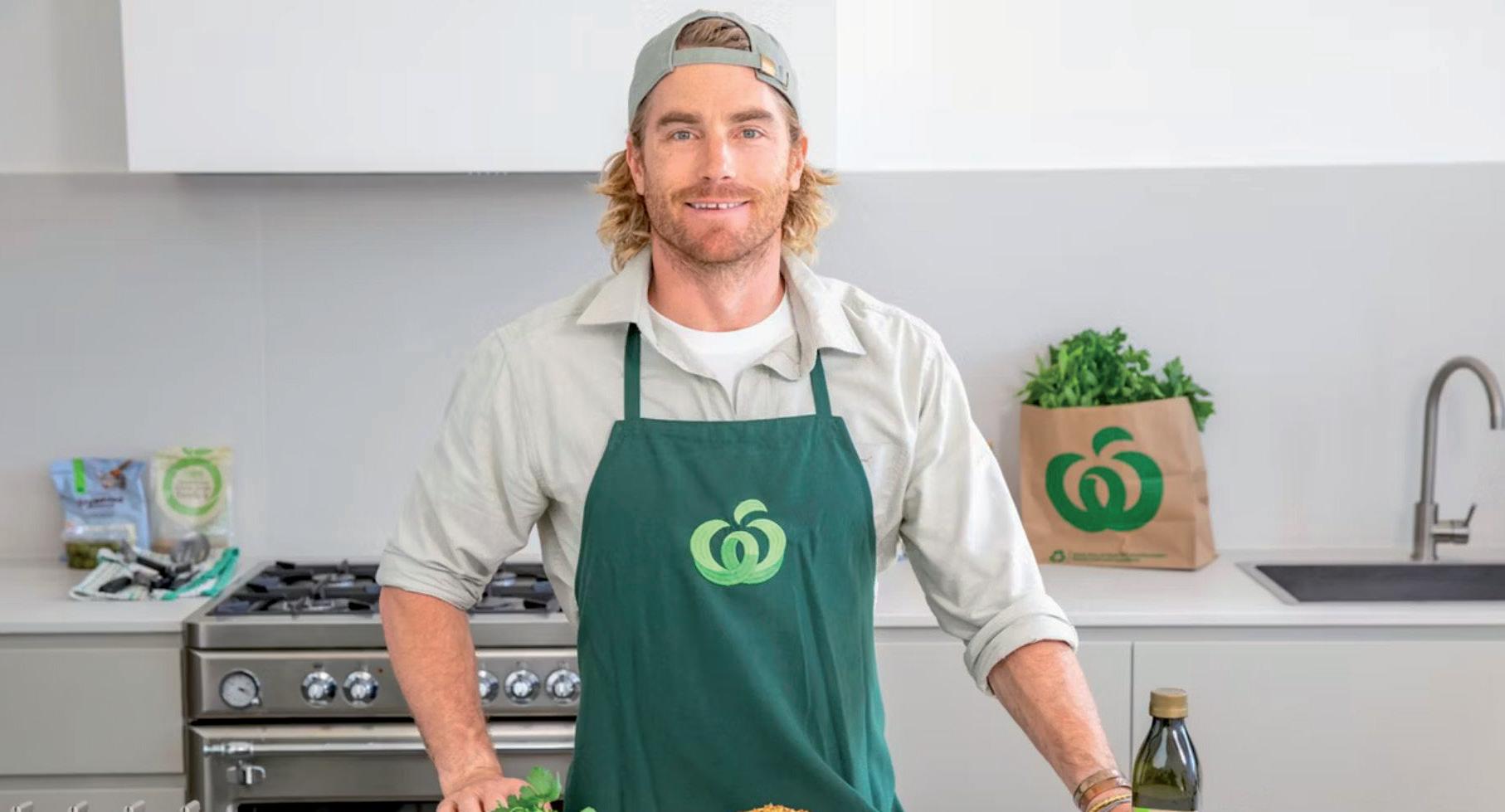


Menumaster delivers speed, efficiency, strength, and durability – which is why it is the microwave oven of choice for fast food chains, service stations, supermarkets, convenience stores, cafés and restaurants. Comprising a complete range of commercial microwave and accelerated microwave, convection, infra-red ovens designed to meet the needs of the most demanding hot food serving environments.

Queenstown Resort College and Hospitality New Zealand have announced a range of NZQA-approved micro-credential courses for those in or just starting out in the hospitality industry. The courses have been designed to elevate the skills, expertise, and professionalism in the hospitality industry.
The courses will be delivered through Grow Tourism, a professional development platform offering bite-sized blended learning for those in the tourism and hospitality industry. These micro-credentials will be delivered as part of the Grow Tourism Elevate – Powered by QRC & Hospitality NZ programme. Read more here

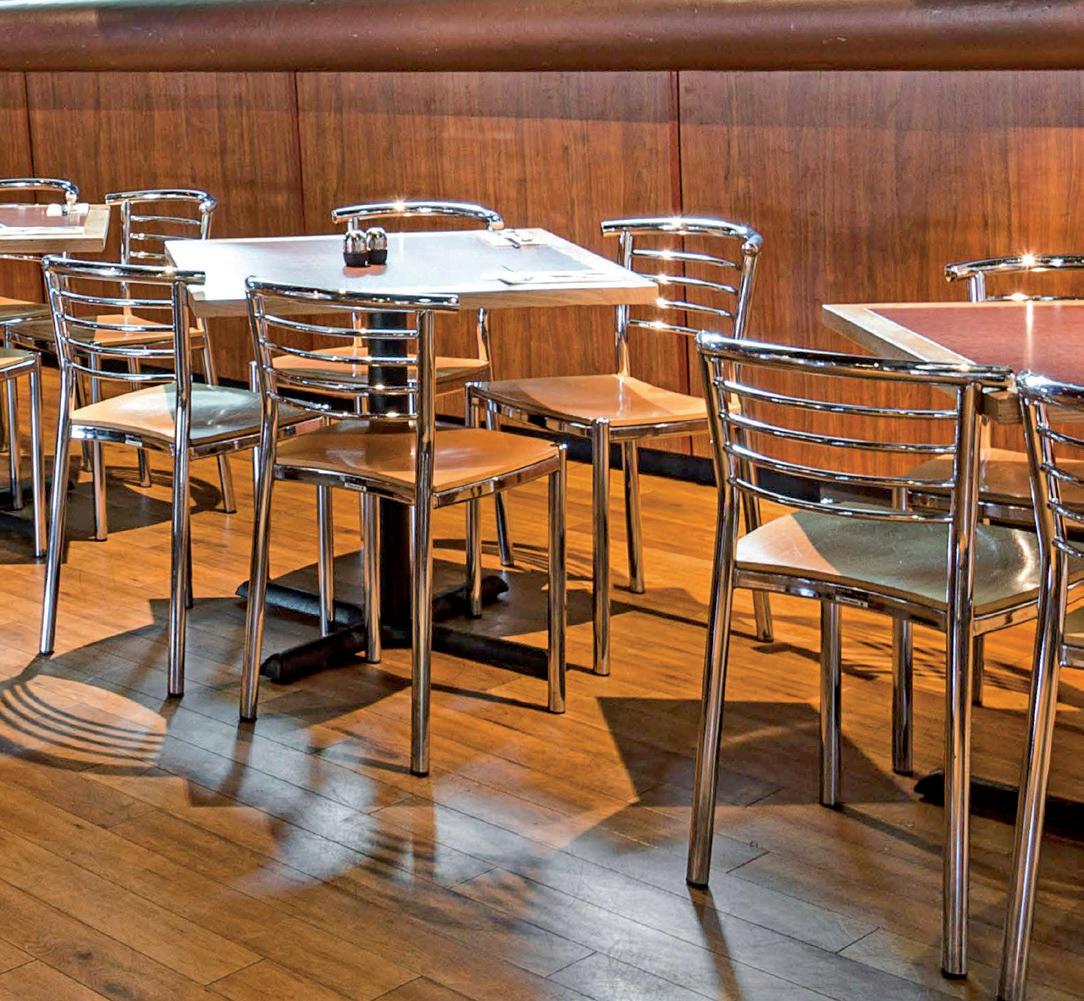
Domino's is set to raise some 'dough' for youthline, New Zealand's leading 'with youth, for youth' mental health and development organisation. On Thursday, 23rd of May, $1 from every pizza sold between the Doughraiser (4:00 pm and 9:00 pm) will be donated directly to the charity.
For almost a decade, Domino’s has been raising dough for Youthline through its annual national Doughraiser, which has seen $245,000 donated so far.
The pizza company’s last Doughraiser for Youthline raised $37,627 of much-needed funds. This year, Domino’s hopes to set a new fundraising record by raising more than $40,000 in one night across 155 stores nationwide. Read more here

Replaces
Enables the alignment of table tops





Auckland chef and TV personality Ben Bayly has partnered with a new charity, the Young Onset Dementia Collective which has been established as a fundraising initiative to help New Zealanders diagnosed with Younger Onset Dementia.
Younger Onset Dementia is used to describe any form of dementia that develops in people under the age of 65. Dementia has been diagnosed in people in their 50s, 40s and even in their 30s. It is sometimes called early onset dementia.
Ben Bayly, who is currently filming the second season of "A Restaurant That Makes Mistakes" at his Auckland restaurant, Origine, was so moved by the volunteers’ and carers’ stories from both seasons that he wanted to do more. As a result, the concept of Dining For Dementia was born. Read more here

Internationally renowned chef Gordon Ramsay has announced the official opening of his latest restaurant, Ramsay's Kitchen by Gordon Ramsay, in St. Louis. Inspired by Chef Ramsay's travels abroad, the Ramsay's Kitchen concept takes guests on a global culinary journey. The
Following its administration, Good Group Australia has officially closed down all three of its Botswana Butchery restaurants. The move has terminated the employment of over 200 staff.
In its prime, the Botswana Butchery chain sold steak for as much as $500 a piece, with restaurants located in Sydney, Melbourne and
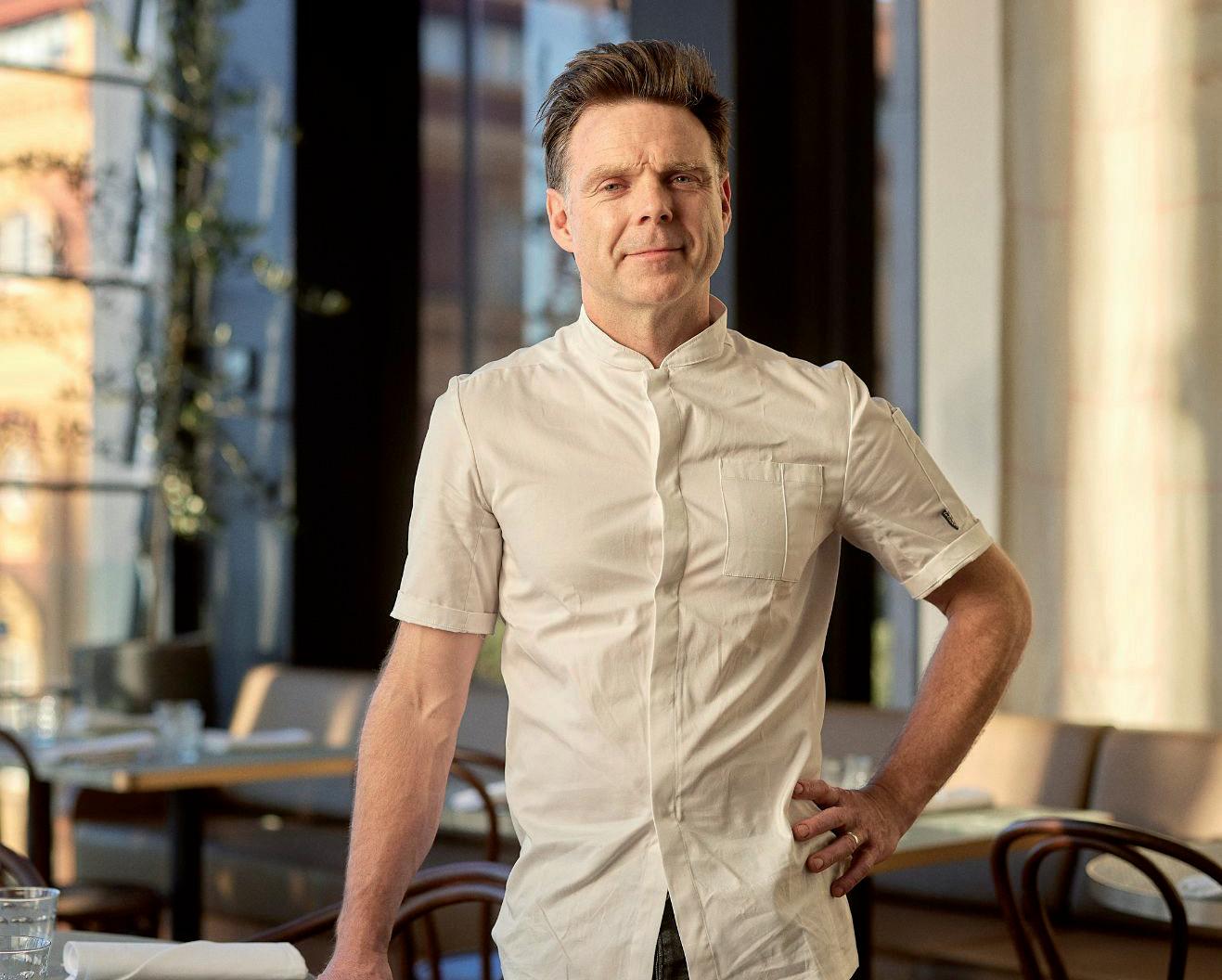
After intense demand from fans, KFC has announced its legendary cult-favourite Double Down will make a return, this time with a new Korean BBQ alternative to compliment the KFC Original Double Down.
The two Double Downs will be available to customers of KFC stores nationwide from Tuesday, May 21.
The Original Double Down is made by stacking two Secret Recipe Fillets, bacon, cheese and the Colonel’s Special Sauce. The Korean BBQ Double Down features two Zinger Fillets, bacon, cheese, and Korean BBQ sauce. Read more here
restaurant will be located at the Four Seasons St. Louis hotel.
"St. Louis is an incredible foodie destination, with its own vibrant Midwest flavours and influences," said Ramsay.
"I'm delighted to open Ramsay's Kitchen at Four Seasons Hotel St. Louis, a stunning restaurant with amazing views of the Gateway Arch and famed Mississippi River." Read more here
Canberra. The company's appointed administrators, Andrew Sallway and Duncan Clubb of BDO Australia, officially pulled the plug on Tuesday, 14th of May. Read more here


Well-known Australian celebrity chef, Kylie Kwong will close the doors to her highly-regarded restaurant following what she dubbed a 'tough time' for the industry.
She said that it felt like the right time to close, adding that she had given that piece of her life everything she could. The decision to close has also been with great sadness, however she felt another door was opening,

as it does when another shuts. Her current restaurant, Lucky Kwong, has scheduled it's last day of service for June 26. Read more here

The last few years have seen significant changes in the dairy industry. As consumer awareness grows and preferences shift, the alternative dairy category has risen.
Driven by health and dietary restrictions, allergens, or environmental concerns, this evolution in consumer behaviour has forced many in the hospitality industry to adapt and cater to a variety of needs and concerns.
The most growth has been in the plant-based alternatives category, which includes alternatives such as almond, soy, cashew and oat milk. Many might argue that these alternatives have nutritional value and are often even better tasting than traditional dairy milk.
With ever-increasing growth and awareness and more available options, there is also bound to be increasing competition in the dairy category.
The coffee industry has played a significant role in the popularity of plant milk. Oat milk seems to be a leader in the plant milk industry, not only in Australia and New Zealand but even in the UK and Germany, owing to its sweeter taste and better compatibility with coffee.
When choosing milk and mylk suppliers, Richard Goatley from Altezano Brothers mentioned that the key factors to look

for included ingredients and taste, performance under steam, reliability of supply and distributor, and price. Environmental concerns have also been an important contributing factor to the rise of plant milk. Oat milk tends to be less carbon-intensive, requires less water, and uses less land than dairy milk.
In recent times, there has been more innovation in the dairy industry, with not just the traditional milk and mylk options but also the introduction of new alternatives such as hemp milk in the plant-based category and the growth of sheep, deer and camel milk in the animal-based category.
“We think the closest plant-based milk to dairy, and maybe even better, is Hempseed Milk. Its composition is very similar to dairy milk
in fat and proteins and has the benefit of being naturally low in carbohydrates and zero sugar,” said Sarah Foxton, spokesperson for Good Hemp.
At the same time, Hamish Glendinning, head of commercial at Pāmu Foods, said people who consume deer milk do so for nutritional reasons, which recent research and clinical trials have increasingly reflected.
As the dairy industry continues to evolve in the upcoming years, and health and environmental concerns become a top priority, the hospitality industry must adapt to the needs of mainstream consumers.


Aside from the increasing popularity of oat milk and other alternative kinds of milk, drinks like matcha lattes and specialty teas have also gained popularity.
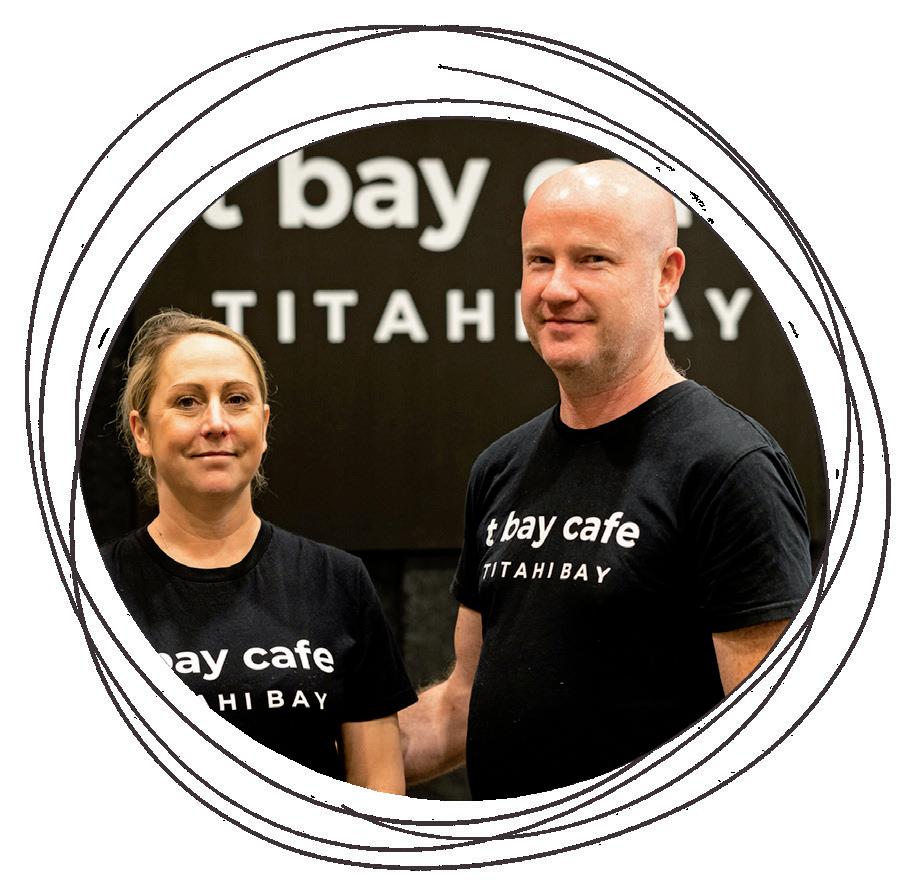
Anna Doyle and Jeff Goldsbury T BAY CAFE
According to Jeff Goldsbury from T Bay Cafe, the brand has been one of the most important factors in the development of alternative milks such as soy, oat, and coconut.
“We have observed significant differences in how alternative milk brands respond to stretching,” said Goldsbury.
“Therefore, we use Alpro for all our alternative milk as it is the most consistent product among the alternatives we have worked with. Our focus on quality and consistency is paramount in this regard.”
When choosing milk suppliers for the cafe, the T Bay team considers several factors. In the case of cow’s milk, price has been the primary consideration, with budget milk brands performing as well as the more expensive brands.
However, consistency is another crucial factor, as the main criterion is the ability to stretch the milk properly for coffee.
Although there are always alternatives, the cafe usually sticks with brands it has preferred, sometimes only offering alternative milk once it can obtain the quality brands it prefers.
“If our baristas encounter issues with batches of milk from a supplier, we

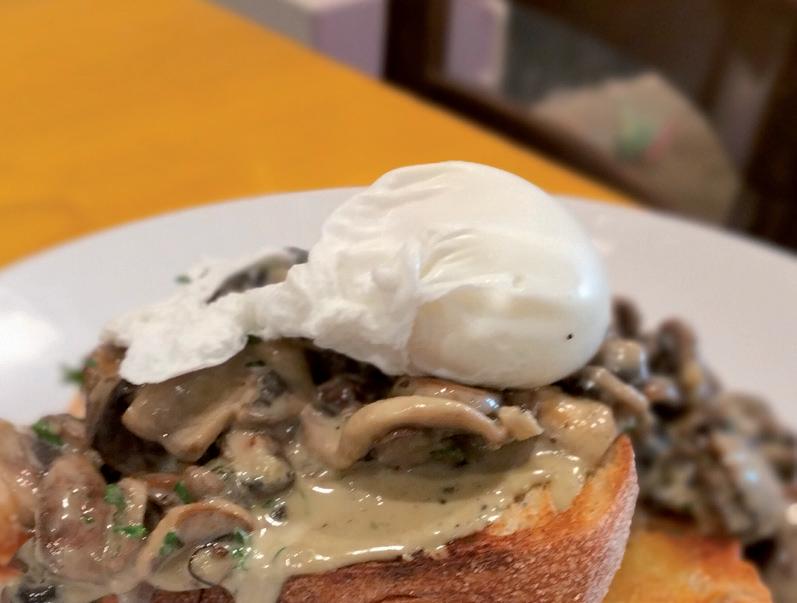
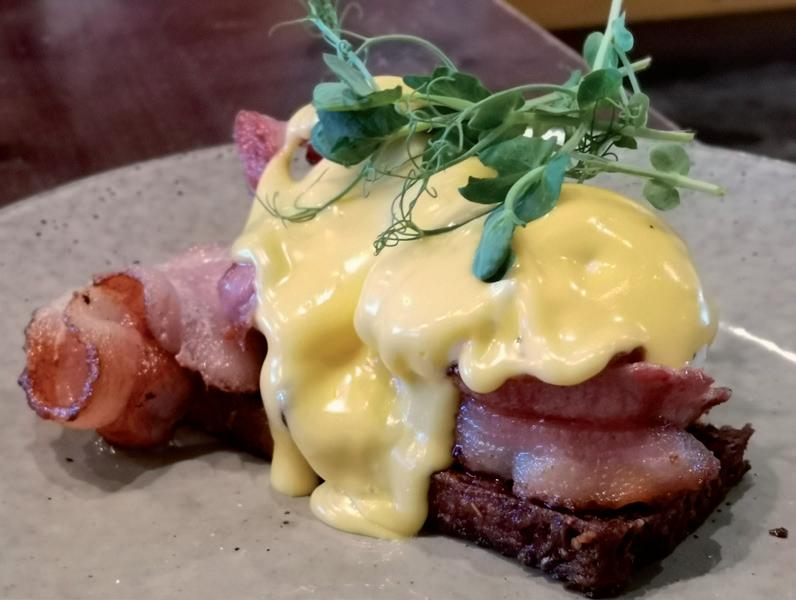
may switch to another supplier.”
Goldsbury added that the cafe was open to collaborating or partnering with milk or alternative suppliers to enhance its offerings. Numerous suppliers have already approached the cafe and have always been willing to test their products.
“If they meet our standards and are competitively priced, we are happy to switch.”
Customers’ preferences regarding milk choices change over time and go through phases. For instance, T Bay cafe had been selling a lot of almond milk coffees, but the demand for almond milk dropped, and almond milk was stopped around a year ago.
In the last couple of months, the cafe has seen a resurgence in demand for almond milk. That being said, oat milk has been the most sought-after alternative milk product.
Coconut milk drinkers also remain consistent as the demand for coconut milk has been the next highest alternative for T Bay.
“The most significant change we have observed over the last few years is people moving from soy to oat milk.”
Regarding pricing, the cafe has set an additional 50 cents per cup for any alternative milk. While this
pricing method may not be very scientific, Goldsbury believed it was a fair reflection of the additional costs incurred by the cafe.
He also highlighted the varying preferences among the diverse range of age demographics.
Generally, the older demographic at the cafe prefers trim flat whites, teas, scones, and muffins, while the younger to mid-30s demographic prefers vegetarian, vegan, and keto options. At the same time, there has often been a considerable overlap in people’s preferences within each group.
The cafe has also committed to catering to its customers’ dietary requirements. It has implemented processes to ensure that customers with specific needs or allergies can be safely accommodated.
“We encourage our customers to inform us of their dietary requirements so that we can adjust our processes accordingly.”
The most common requirement that T Bay has encountered has been for gluten-free or coeliac dishes. It has specific protocols to ensure that customers can dine confidently.
For coeliac or dairy intolerances, customers are provided with information regarding any dairy or


gluten traces present in the products, such as in drinking chocolate.
“We aim to use only gluten-free products to keep things simple and accessible for everyone.”
Regarding sustainability, T Bay Cafe has sought innovative ways to reduce its environmental impact and support suppliers who share its vision. Its coffee supplier provides coffee in reusable buckets, which has significantly reduced waste.
In response to the growing demand for used coffee grounds, the cafe has partnered with community composting groups, allowing the responsible disposal of 100 percent of used coffee grounds and food waste. This has reduced waste and helped community groups with composting and gardening projects.
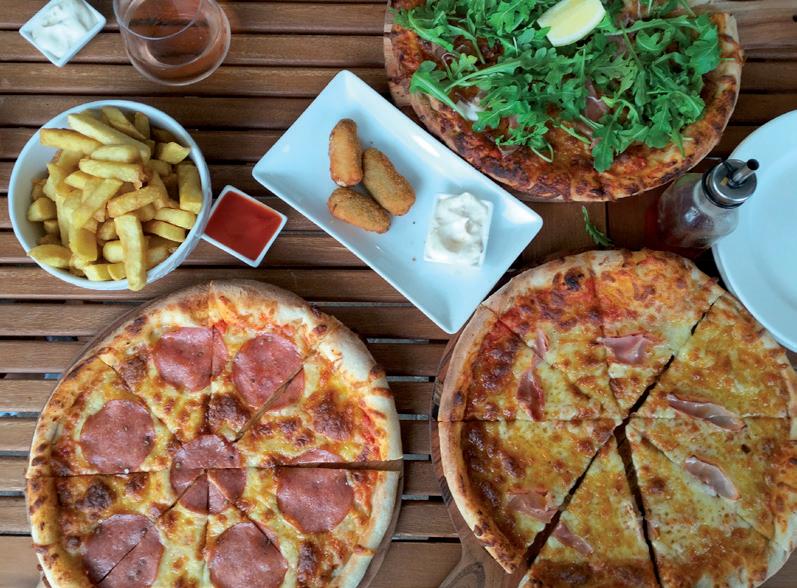





Since its launch in 2019, Spout, a zero-waste milk supplier based in New Zealand, has had an enormous impact.
e started Spout because we saw plastic milk bottles piling up outside cafes and thought there must be a better way to make milk that doesn’t involve creating so much waste,” said the founders of Spout, Nick Jackson and Luka Licul.
“We have helped our customers avoid using more than 100,000 plastic milk bottles.”
As Spout has expanded into new regions, it has partnered with local farms to ensure the milk remains fresh, minimise transport emissions, and ultimately support local businesses.
These farms in Canterbury and Otago have on-site processing facilities for pasteurisation, keg filling, and keg cleaning, all of which happen



on the farm. The cows are milked in the morning, the milk is processed, and the kegs are filled all within one day.
The following day, the milk is delivered directly to customers.
When kegs are empty, they are picked up by the customers and returned to the farm, where they undergo a multi-stage cleaning process using custom-designed keg cleaning machines.
“We use best practices from the dairy and brewing industries to thoroughly clean our kegs before refilling.”
Like most businesses, Spout has encountered its fair share of challenges, particularly throughout the R&D process. One incident involved a cofounder who ended up on the floor in a puddle of milk.
Once the product had been refined,



finding a customer brave enough to become the first to use milk on tap had also been challenging.
“Finally, alongside millions of Kiwis, we rode out COVID as our hospitality customers closed their doors to the public for months.”
Spout has directly contacted local businesses and encouraged happy customers to share their experiences with people they know. Throughout the year, it has also constantly updated its customers about its environmental impact. The founders hoped Spout would catalyse change across the dairy industry and the broader economy.
“We have begun seeing the emergence of waste-free solutions across many industries, and we hope this trend continues.”





Craigmore Sustainables has collaborated with new technology innovators in sustainability, people, animals, and business management to enhance New Zealand’s dairy sector.
The company has invested in programmes designed to help the business and the sector maximise opportunities and address challenges, such as improving water quality, reducing greenhouse gas emissions and increasing biodiversity.
Craigmore’s GM Farming Stuart Taylor said that the company felt responsible for investing back into the New Zealand dairy sector, given its scope, scale and capability.
“As a business with scale, we can tap into expertise across multiple disciplines and be early adopters of technology to help create space for other dairy farmers to adopt new solutions,” said Stuart.
“With 22 farms in New Zealand and part-ownership of other farms, we can spread the cost and risk of trying new things. We’re up for anything we can do to help farmers and the sector to progress.”
As a fifth-generation dairy farmer, Stuart believed nothing was more important for New Zealand farming than continuing to run successful businesses that contributed to the
economy and local communities while being sustainable.
“Our farm environment plans are tailored to each farm and set out how we can continue to reduce our environmental footprint.”
Craigmore’s strategy also focused on trialling new solutions to help reduce greenhouse gas emissions, including new feed types and nature-based solutions. It has also piloted EcoPond to reduce methane in the New Zealand dairy industry.
Its North Canterbury dairy farm has been the first commercial dairy farm in New Zealand to adopt EcoPond. This effluent treatment system removes virtually all methane emitted from effluent ponds.
“Craigmore farm managers participate in local catchment groups where they can, supporting community initiatives to reduce their environmental footprint.”
The company has run a highperformance teams programme by working collaboratively with multiple people, such as Chris Parsens, Ellen Ford, and Jon Lasenby.
“People are one of the most important parts of a farming business, and we’re committed to developing farm teams that succeed and love what they do.”
When setting up a farm system, Stuart said he looked at the farmer’s natural style and characteristics and for passion projects since the farm system is modelled to create success for both the farmer and the farm.
“Every farmer is different. To attract the best people, we have created flexibility around how we run our farms and employ people.”
Craigmore was founded in 2009 by New Zealanders Forbes Elworthy and Mark Cox. They believed the dairy sector was highly innovative but needed capital to invest in the trial and testing of technology to fast-track change.
“We strongly focus on delivering a positive future for New Zealand’s primary sector and rural communities.”



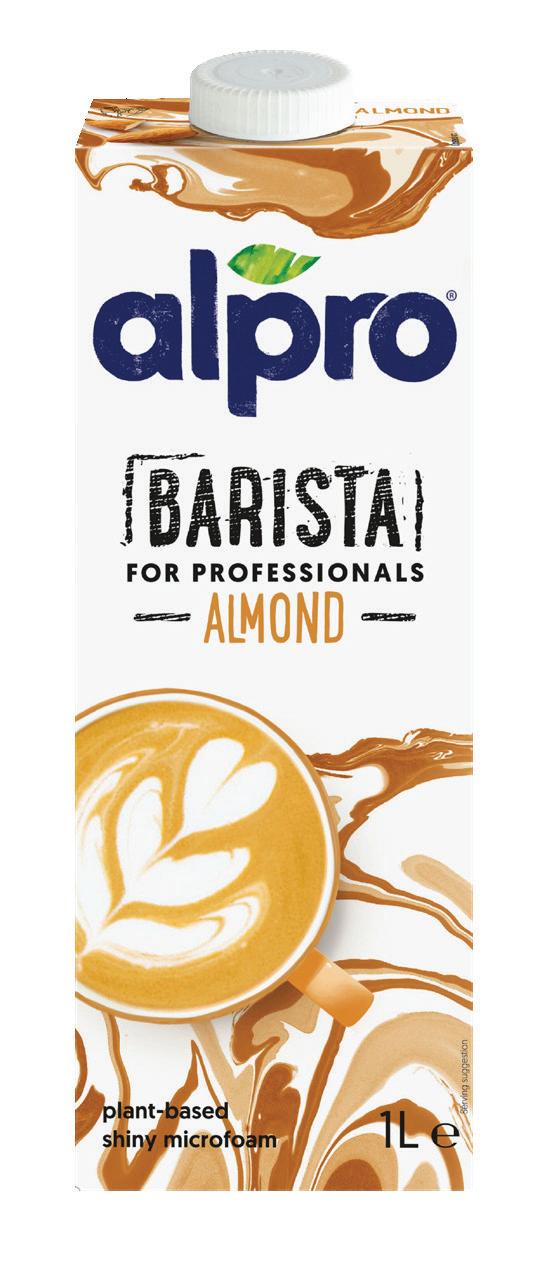


In the current climate of the hospitality industry, being financially wise has never been more important. Exploring ways to offer a high-quality dish at a fraction of the cost may seem difficult. Still, when using ingredients, businesses have the potential to offer a crowdpleasing favourite.
With winter arriving on the doorstep, customers will be in search of a warm dish. Although soup may seem a concept of the past, it still holds a significant place on the menu. Offering a range of soups can reduce operating costs, reduce food waste, and provide a hearty serving of rich seasonal flavours. Soup is also an affordable option for customers to consider.
Soup allows businesses to use leftover ingredients, such as vegetables, spices, or even meat. This allows chefs to maximise their resources and use ingredients with long shelflife potential. Soup can adapt to any
establishment, be it fine dining or casual, and can even be offered in an on-the-go concept. It has also become a popular trend in the street food sector, and its popularity has grown among food truck vendors.
Soup can be prepared in advance and reheated. It lasts longer than most menu items and will limit the waiting time for hungry customers. As a lunch offering, soup provides all the nutrition customers seek and is a refreshing option that can be either light or sustenance-heavy.
As a staple of international cuisine, soups can be adapted to any menu. Be it curry laksa from Malaysia, gazpacho from Spain, or even universally popular options like chicken noodle or potato and leak soup, it will provide an alternative option for customers.
Embellishments are the perfect way to transform the humble bowl of soup into a culinary masterpiece. Herbs, such as sage, basil and parsley, offer extra flavour, and for spice-conscious diners, the addition of sour cream will reduce the heat.
By including soup on the menu, businesses have the opportunity to include additional items such as housemade bread, croutons, or sauces. This will also boost revenue and attract
returning customers. Soup and salad combinations will also allow guests to choose from more variety. Upselling soup will encourage customers to explore other flavours and increase profitability.
Soup caters to diverse dietary needs, attracting a broad clientele. Its use of natural ingredients will benefit vegetarian and vegan diets, while its reduction in food waste will appeal to sustainability-focused diners.
Research has shown that, globally, over 40 percent of hospitality businesses have included a soup option on the menu, with customer demand growing by 20 percent in the past two years. Internationally, chicken is the most popular meat-based soup, with a growing demand for lentil-based soups.
A signature soup will allow hospitality businesses to gain a reputation, especially for new and innovative flavour pairings. Signature recipes will also allow establishments to gain reviews and recommendations and entice stronger customer traffic.
For a low-cost, customer-friendly option, soups are a reliable option for businesses to embrace whilst providing customers with a delicious and affordable indulgence.
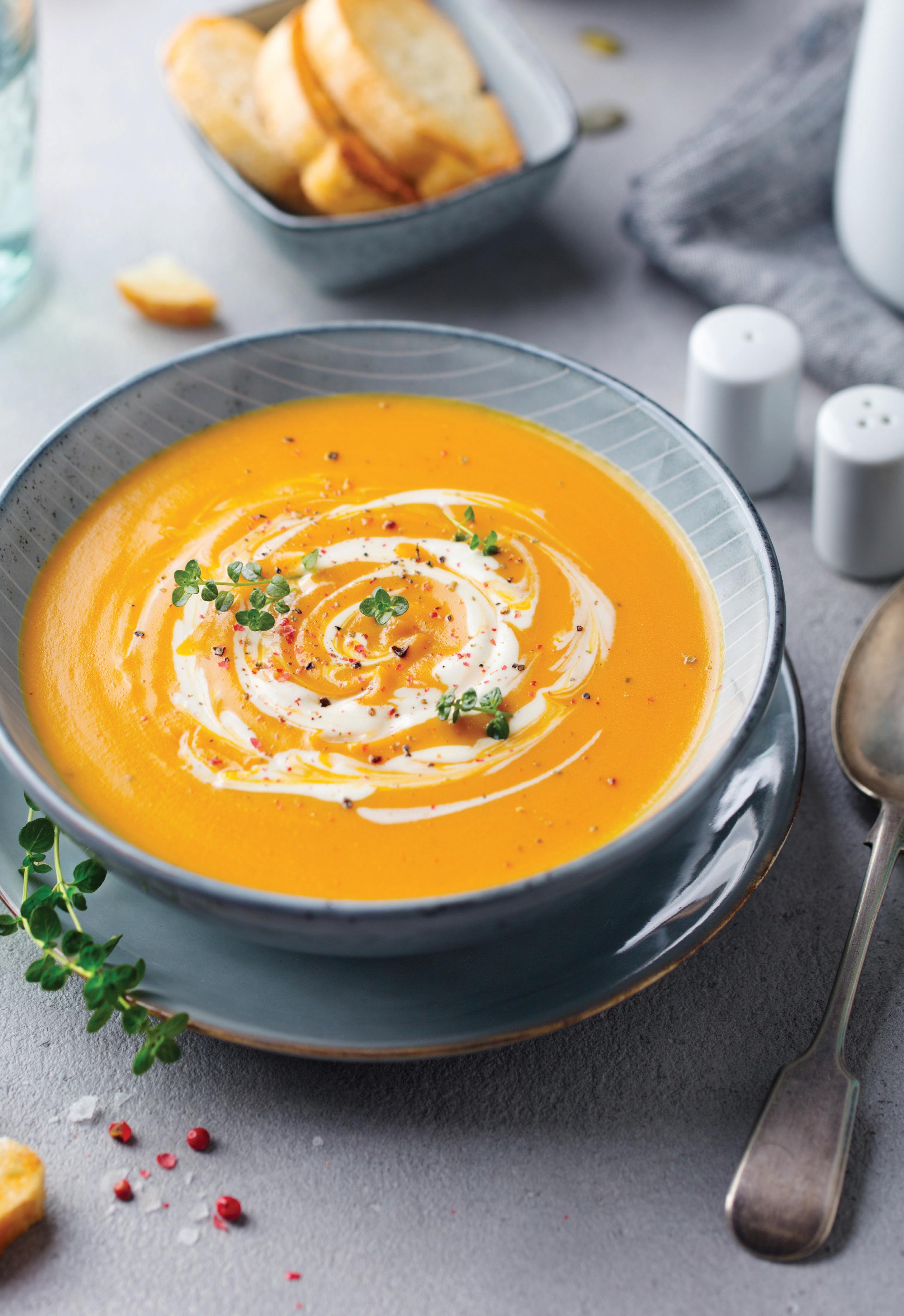


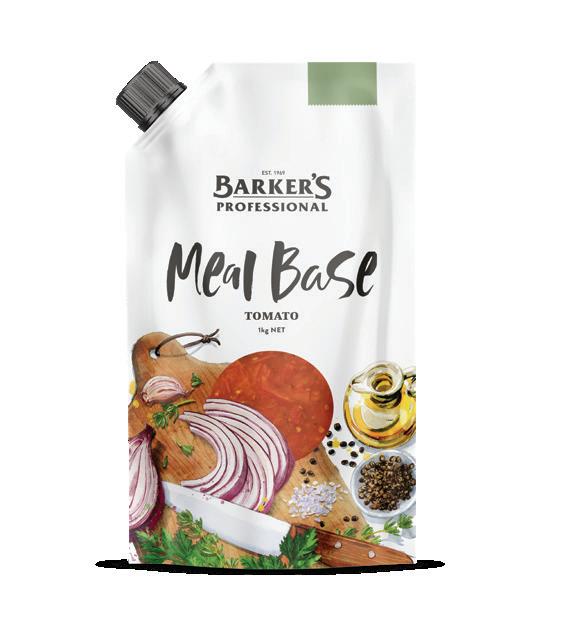

As with any dish, every chef will have a different interpretation of flavour combinations, traditional styles, and presentation regarding soup.
Chef Michael Tse of Stella Restaurant & Bar in South Yarra said soup’s popularity can be linked to its availability to be ordered at any time of the day.
“I believe that people enjoy soup, particularly during this season, because it has a warming effect on the body, especially during the winter season. It is not only easy to consume but also packed with flavours that make it a delicious meal option,” said Tse.
Tse said more adventurous soup flavours have been introduced as chefs test out new and unique ingredients.
“They also draw inspiration from local communities and diverse cultural backgrounds. I personally think that
this trend will lead to the discovery of new and exciting flavours for this dish.”
As new ingredients are introduced, chefs have the unique opportunity to introduce dishes that are suitable for all dietary requirements.
Chris Nelson of Edgewater Wanaka, said the classic options of tomato, leek and potato or pumpkin will always be the most popular flavours, however, the use of dairy-free alternatives such as coconut milk or plant-based cream would create a less heavy version of the dish that will cater to everyone.
Noble Rot Head Chef Nicolas Mentzas said soup has attracted diners all over the world due to its multiculturalism.
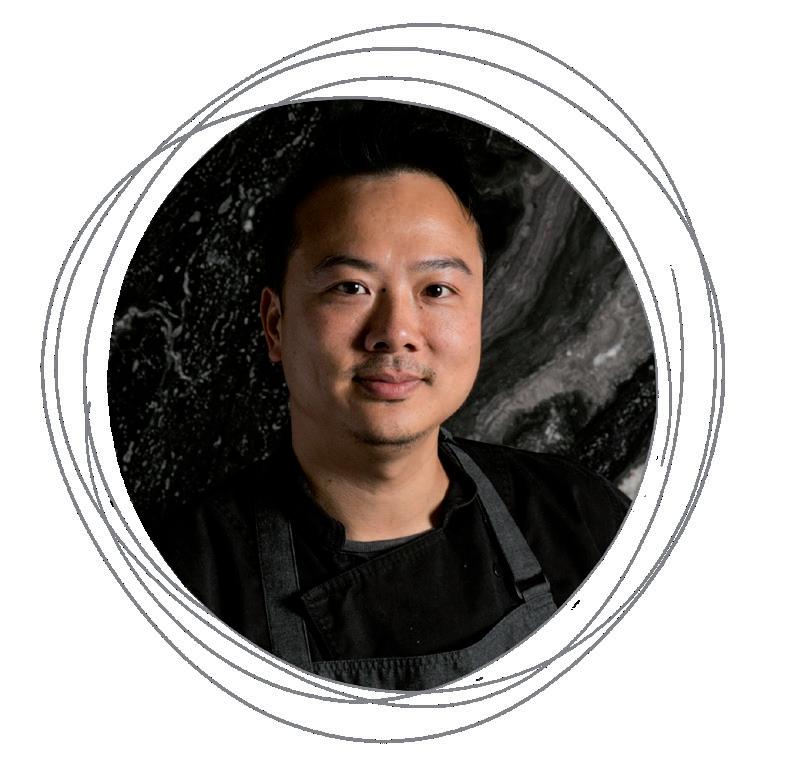
“Soup has been eaten all around the world since the beginning of time. So, pretty much every culture has a traditional soup within its culinary repertoire. One thing that has changed in modern times has been the fusion of those soups, as it has become sort of a melting pot for people that want to travel and try new flavours,” said Mentzas.
Mentzas said a growing trend for chefs has been to deconstruct soup. For instance, bouillabaisse, a classic southern French fish soup that is usually cooked all together on the boat until the fish has basically disintegrated, results in a very strong fish flavour. Mentzas said what he would personally do for the modern palate would be to filet the fish, make a stock with the bones and sear the filet separately.
“I would most likely plate the filet neatly with a few garnishes before pouring the broth tableside. This way of proceeding would result in a cleaner flavour and would be the best of both worlds,” said Mentzas.
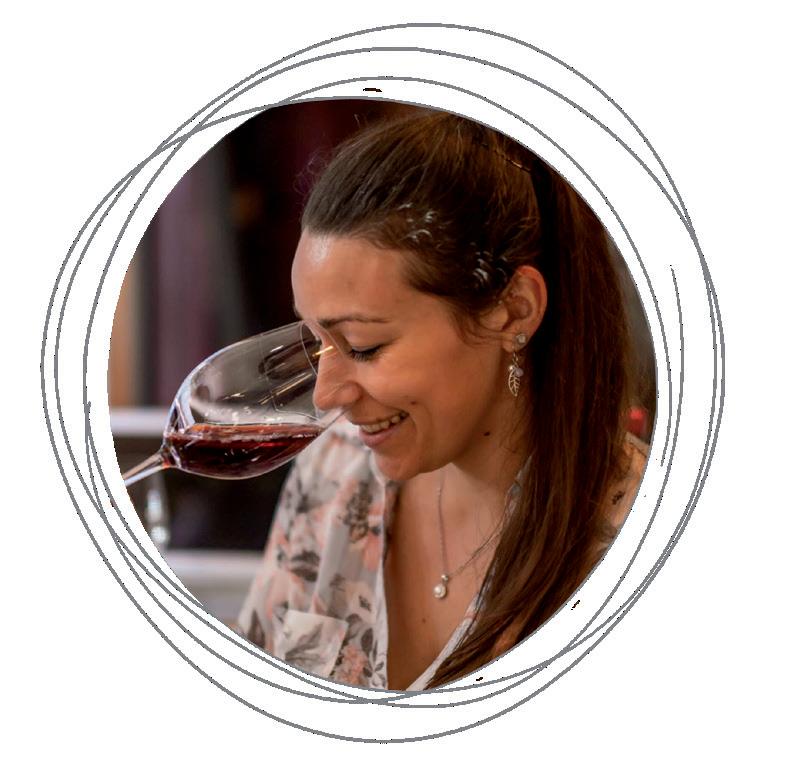

in soup, pairing wine needs to be the supporting act rather than the star.
“The trick is to match the texture of the soup and the intensity of its flavour with your chosen beverage. For instance, is it thin and light, such as a consommé, or thick and creamy, such as a chowder? Is it a delicate and earthy mushroom soup or an intenseflavoured Provençal fish soup?”
Wood said that rich and creamy soups can benefit from a welcome note of freshness and contrast from wine, almost like a squeeze of lemon for an extra layer of flavour. Wood suggested pairing Sauvignon Blanc or Riesling with cream of tomato soup and sparkling wine that would also be complementary as the effervescence lifts the palate and offers a refreshing mouthfeel.
She also suggested the classic pairing of consommé and dry sherry or Madeira, to add a touch of sweetness and nuttiness to balance the meaty savouriness of a soup. Chunky, rustic soups with beans or pulses such as minestrone or lentil soup would pair well with a medium-bodied red wines such as a young Syrah, Sangiovese, or Tempranillo.
“Wine doesn’t have to be the answer for all soups; in fact, some soups would be better paired with an alternative beverage. For example, beetroot soups such as the famous Polish borscht is really quite tricky with wine - a Pilsner is undoubtedly better,” said Wood.
Lucas Lee, Headchef at Wakuwaku Restaurant, said some element of starch should accompany soup, be it noodles, pasta, dumplings, rice or bread.
“The way these starches absorb the flavours of the soup enhances the overall dining experience, creating a harmonious blend of tastes and textures. It’s a delightful marriage of

flavours that elevates both the soup and the accompanying carbohydrate, offering diners a truly satisfying meal,” said Lee.
Lee suggested that simple ingredients can be highly valuable when innovating a soup recipe. An example he gave was adding ginger oil for warmth, aka yuzu kosho, for a spicy kick, and seaweed and oysters for a taste of the ocean.
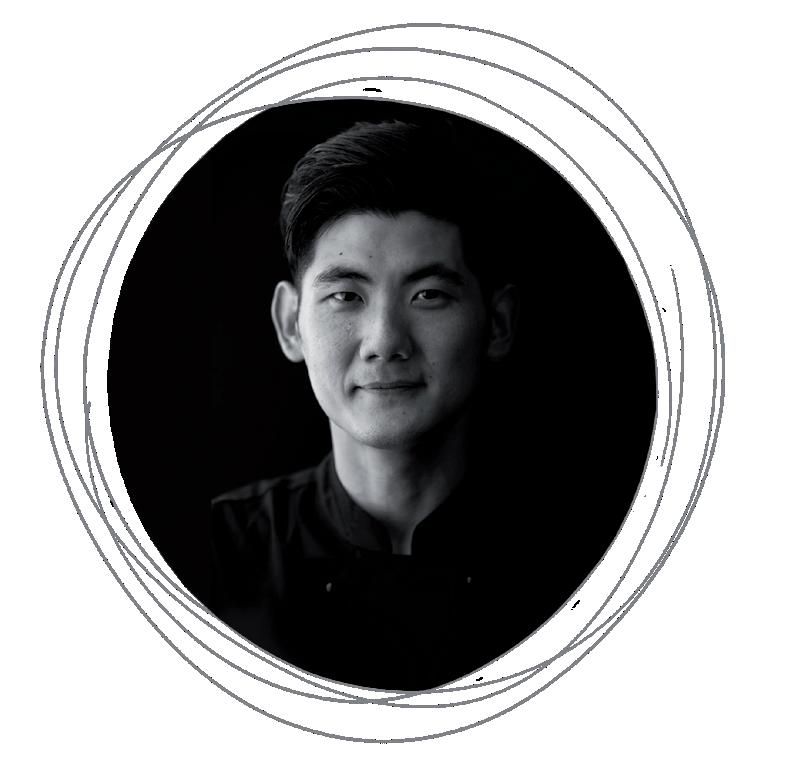
He said it was important to showcase the versatility and creativity that can be infused into a simple broth. Lee has recently introduced the ‘Tentsuyu’ broth, which is made from traditional Japanese cuisine with its base in Dashi and seasoned with light soy sauce and mirin.
“Innovation in soup, like what I’m doing with the Tentsuyu broth, keeps culinary traditions fresh and exciting while still paying homage to the comforting aspects that make soup such a beloved dish.”
Soup is an ever-ready option that, with some artistic flair, can be enjoyed in a traditional way or as an innovative option for customers to revel in.






One of the primary advantages of open book management is the significant boost in employee engagement it can generate. When staff are given access to the same financial and operational data as managers and owners, they gain a clearer understanding of their role in the business’s success. This transparency helps align their goals with those of the business and encourages a sense of ownership and responsibility.


Business owners can be understandably hesitant to share too much financial information because they believe employees might not fully grasp the complexities and commercial realities of running a business or are concerned about sharing information that might usually be considered confidential. But here’s the thing— how can employees understand these realities if they’re never shown the full picture? By opening up the books, you’re not just sharing numbers; you’re educating and empowering your staff. This helps them make more informed decisions that can positively impact the business. Employees aren’t just task performers; they become active contributors to a shared goal, which can significantly boost their engagement and motivation.
Open book management can have a direct impact on the financial
performance of a business. Employees who understand how their actions affect the company’s financial results can make better decisions that contribute to profitability. For instance, a waiter might strive to enhance diner experiences and upsell products if they understand how these actions affect the bottom line. By openly discussing business financials, owners can identify and address inefficiencies more quickly, leading to more effective cost management and improved results. Quick and effective decision-making can be critical in our industry and having multiple perspectives can be beneficial. Open book management encourages a culture of information sharing where ideas can be debated collaboratively. This can be particularly beneficial in a fast-paced environment where the front-line employees who interact directly with customers may spot opportunities or issues that are not immediately visible to management.
When employees understand how their work impacts the business, they are more likely to contribute ideas that can drive the business forward. Open book management nurtures innovation by involving
employees in brainstorming sessions and strategic discussions, which can lead to improvements in service and operations.
Transparency breeds trust, and by practicing open book management, hospitality businesses can foster a stronger sense of loyalty among employees. This open communication helps to mitigate conflicts and misunderstandings by providing everyone with access to the same information. Better relationships within the team not only improve the working environment but also enhance the guest experience, as happier and more cooperative staff tend to provide better service.
I believe that open book management has huge potential for our industry. By empowering employees with knowledge and trust, businesses can enhance engagement, improve financial outcomes, encourage better decision-making, promote innovation, and build a more cohesive team. As the industry evolves, more businesses may find that integrating open book management into their operations is not just beneficial, but essential for sustainable success.




For four decades, the Giesen Group has worked tirelessly to make awardwinning wines. Founded by Theo, Alex and Marcel Giesen, the familyowned business has created a strong culture of innovation within the New Zealand wine industry.
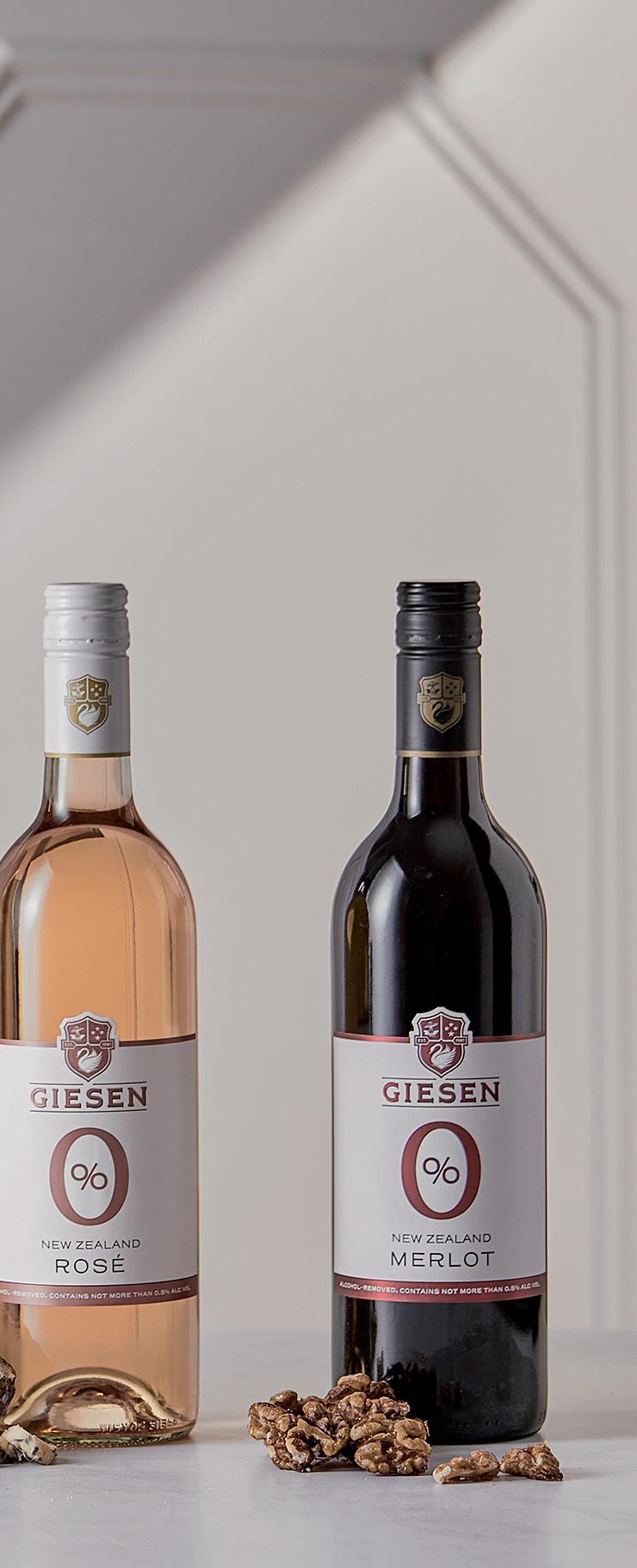

Duncan Shouler Director of Winemaking GIESEN GROUP
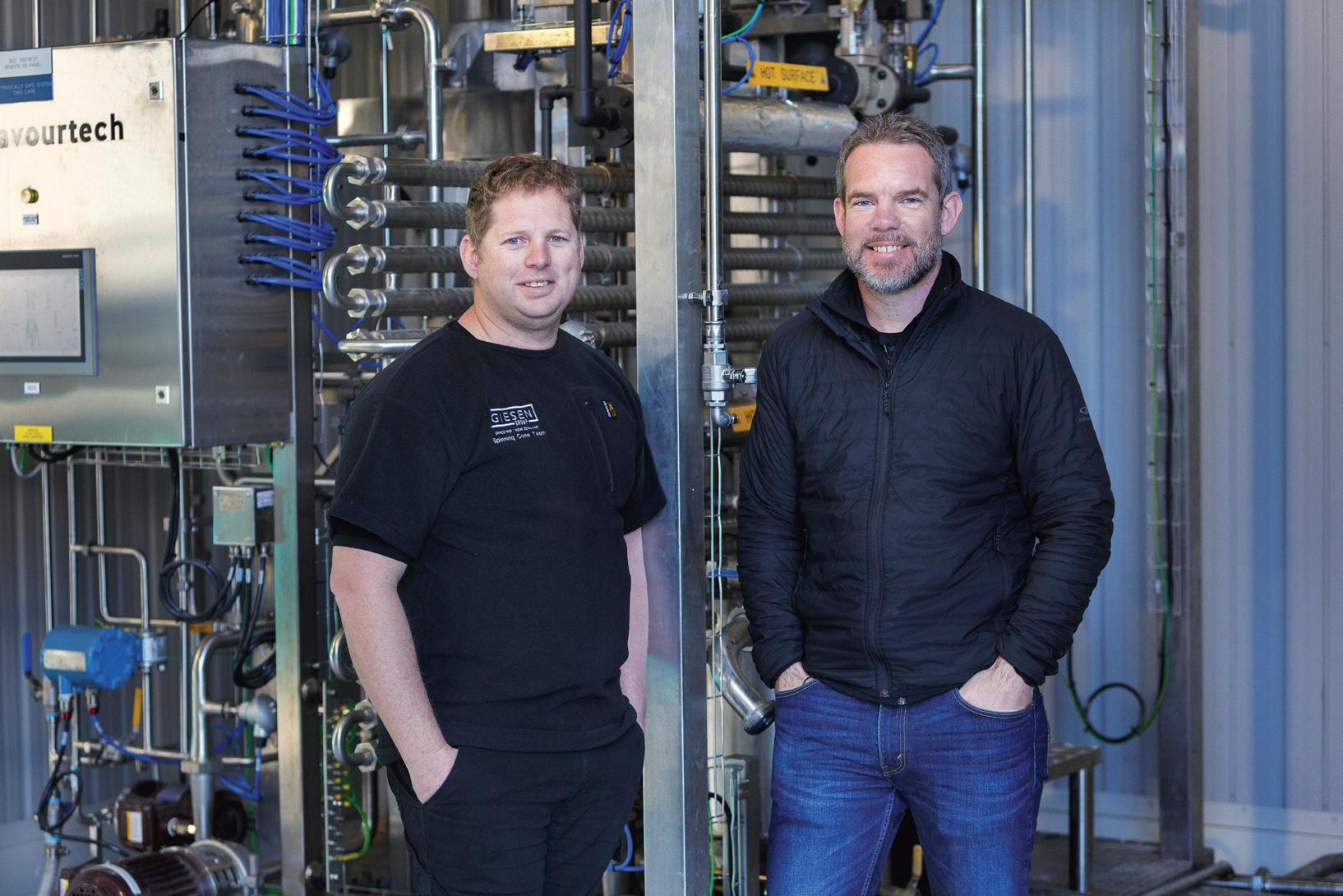
Duncan Shouler, Director of Winemaking at Giesen Group, has worked closely alongside specialists to create award-winning wines while also venturing into non-alcoholic offerings.
When asked what motivated this business venture, Shouler said that Giesen Group recognised the global consumer shift towards health and wellbeing, which included moderation and mindful consumption of alcohol.
The company embarked on this journey in 2020, developing a range of non and low-alcohol alternatives.
“At the time, we had embarked on a company-wide fitness challenge, which included no alcohol for a month,” explained Shouler.
“This became a big motivation for our winemaking team to start trialling how premium, low-calorie alcoholremoved wine could taste.”
The first alternative they explored was Sauvignon Blanc, as the Giesen Group knew that the intense aroma and concentration of Marlborough Sauvignon Blanc would ensure a trueto-style wine without alcohol.
Four years later, the company increased the range to six wines including; Sparkling Brut, Sauvignon Blanc, Pinot Gris, Riesling, Rosé, and Merlot.
Giesen Group received an overwhelmingly positive response from consumers, who praised the taste and quality of its non-alcoholic wine. Through cutting-edge spinning cone technology, Giesen Group has created a range of products with a similar flavour profile to regular wine.
They became the first New Zealand winery to use this technology to produce alcohol-removed wines,
solidifying their status as a crafter of premium-quality alternatives.
“What truly distinguishes our noalcohol wines is the meticulous attention we pay to ensure they are low in calories and low in sugar,” said Shouler.
“We start with a full-strength base wine, using premium New Zealand grapes carefully selected by our winemaking team during harvest, ensuring the production of highquality, great-tasting, low-calorie, noalcohol wines.”
For Giesen Group, there is more flexibility to innovate within the noalcohol category as it faces fewer legal restrictions than wine. Innovation within this category can range from flavoured and functional beverages to different packaging formats.
Giesen Group has remained at the forefront of the industry through continuous investment in cutting-edge technologies such as spinning cone machines and decanters. They have combined a passion for winemaking with a commitment to excellence and sustainability, setting new standards within the wine industry.
“To meet the increasing global demand for our no-alcohol wines, we have just started operating a new, larger spinning cone machine, the SCC10,000, at the winery,” he said.
“With eight times the production capacity, this machine will enhance our de-alcoholisation capabilities and provide us with greater opportunities for innovation and quality improvement.”
The company has made its intentions very clear: to continue to find innovative solutions within its nonalcoholic offerings to meet consumer demands.




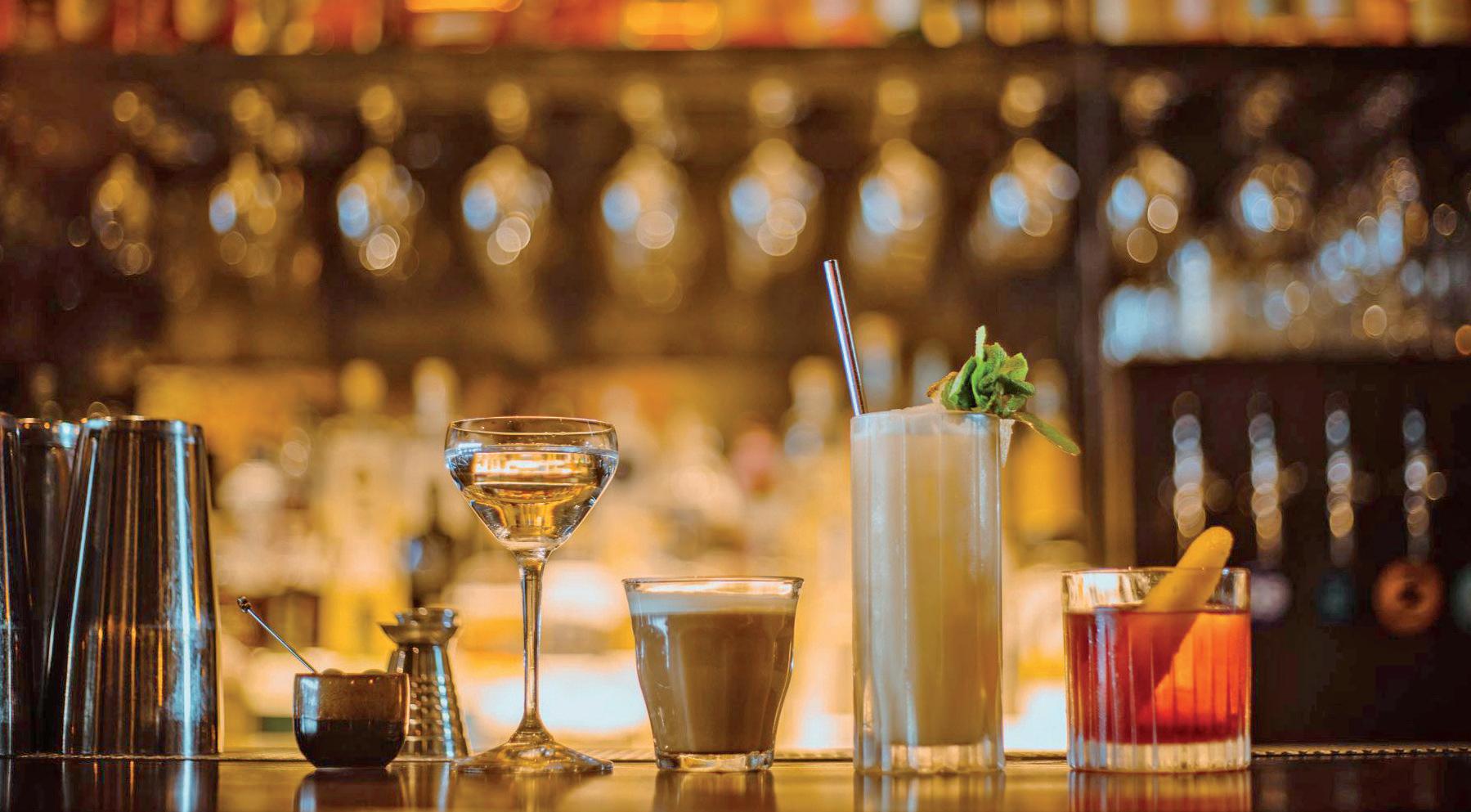

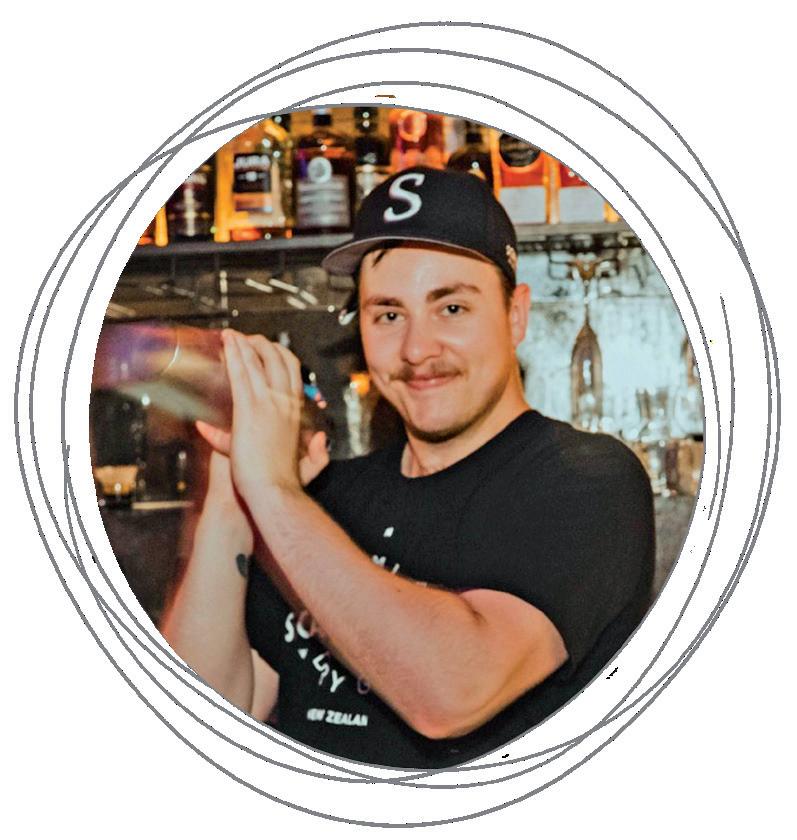
Isaac Gamboni Manager THE BROKEN LANTERN
The increase in alcohol-free consumers has compelled bars to think innovatively and create alternatives that uphold the taste.
Isaac Gamboni, the dedicated manager at the Broken Lantern, has been leading the bar’s response to this industry shift.
“Drinking culture in New Zealand has always been a tough topic,” said Gamboni.
“A growing non-alcoholic market could have a profound cultural effect, and I am all for that.”
Gamboni has been working at the Ponsonby bar for 16 months, witnessing firsthand the ever-changing trends within the nightlife industry. He considers the Broken Lantern a cocktail pub where you can get anything from a pint and a burger to a round of well-made martinis.
When asked about the current climate of non-alcoholic beverages, Gamboni discussed how the primary
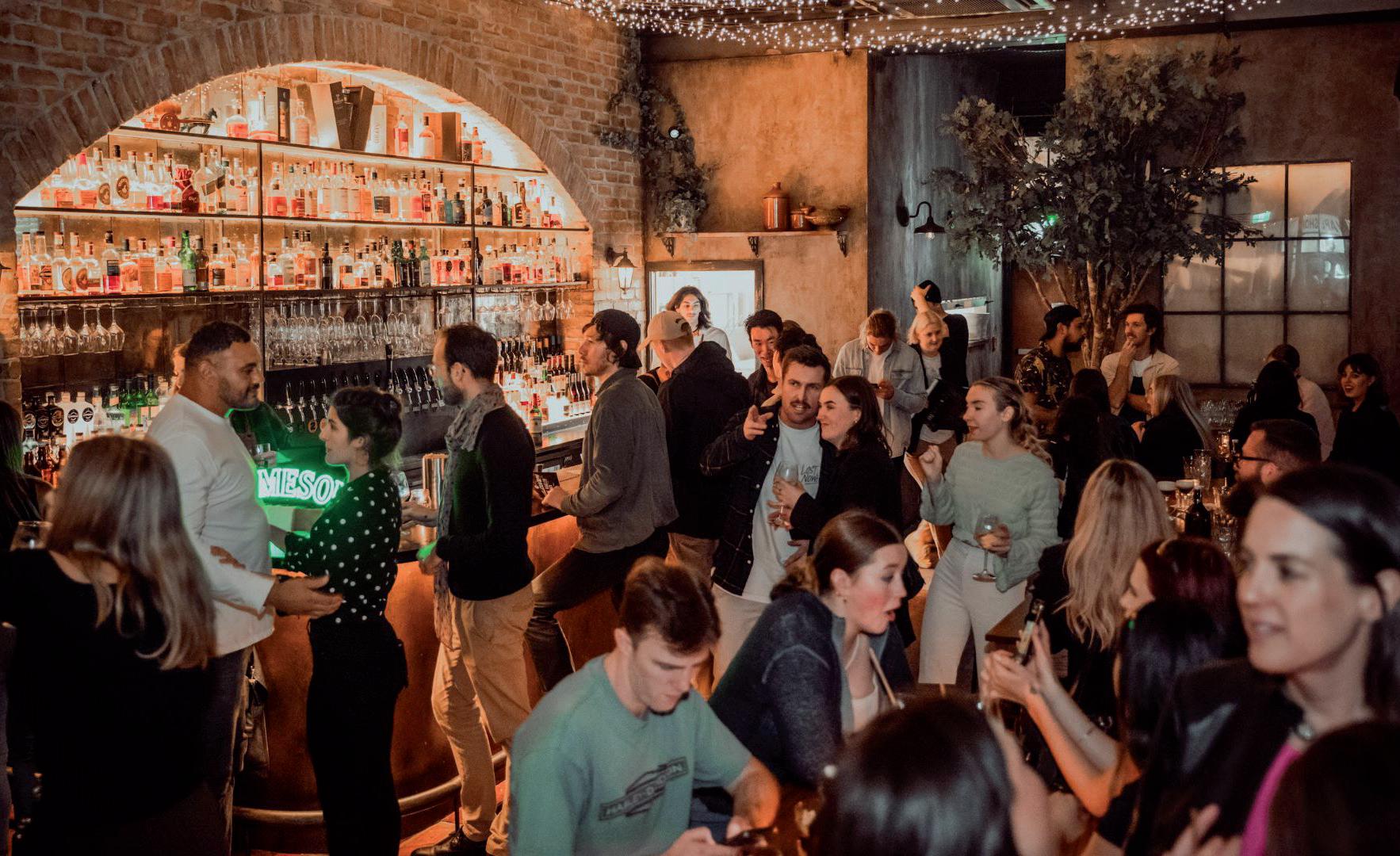
issue is that alternatives are often too sweet or incredibly bland.
“We have three mocktails on the menu and a couple of others we can create if needed,” he explained.
“None of the options are a sugary mess with some carbonation; they are more complex and offer other flavour choices that soft drinks can’t deliver.”
The Broken Lantern has made a wide array of bespoke syrups, shrubs, and infusions used across its menu to control flavour profiles and sweetness. The team regularly tastes and alters these syrups and shrugs, perfecting the flavours.
He spoke positively about the shift in consumer needs and the rise in non-alcoholic trends. With a drastic increase in mocktails and alcoholfree beverages over the last five years, a new wave of zero-percent beer, wine and cocktails has taken over the industry.
“I think more and more people are feeling okay about going out and not drinking alcohol,” said Gamboni.
“Regarding flavours, I think juicy
tropical fruits and some zero percent hazy beers are in the limelight.”
When asked what his favourite non-alcoholic drink at The Broken Lantern was, Gamboni highly recommended a Strawberry Fields. It is a balanced mix of house-made strawberry and vanilla grenadine, freshly squeezed lemon juice, and tonic water, served in a wine glass.
The slight tang, mixed with the sweetness of strawberry, is the perfect combination.
In addition to this, Gamboni highlighted the growing market for zero percent spirits and the potential they have for customers who still enjoy the taste of alcohol but don’t want to experience the symptoms.
Although The Broken Lantern doesn’t offer them at this stage, Gamboni hopes to see that change soon.
Moving forward, The Broken Lantern will focus on a new menu launch that will bring new flavours and mocktails, offering great substitutes for the alcohol-free community.
15-17/8/2024
Hong Kong Convention and Exhibition Centre 8-24/8/2024
Click2Match (Online)

HKTDC Food Expo PRO provides a one-stop business platform for F&B industry buyers to satisfy their appetites for opportunities and building business connections. The 2023 edition gathered more than 20,100 buyers from 69 countries and regions*.
*Include Food Expo PRO & Tea Fair

Register now for FREE admission badge!




Jonny Park
Venue Manager PARASOL & SWING
“Being a bartender is my happy place. I love being at the front of the action, slinging out drinks while providing great hospitality.”
For Jonny Park, venue manager at Parasol & Swing, it’s a thrill to be working behind the bar, whether he is serving alcoholic or non-alcoholic beverages.
Parasol & Swing is renowned for its wide array of cocktails, but due to the rise in the sober curious movement, it has also adapted these drinks to cater to alcohol-free customers.
This has created a selection of drinks that cover various flavour profiles and will suit even the most unique cravings. Park and the team at Parasol & Swing have ensured that guests can choose between drinking alcohol or not, and if they choose not to, they aren’t regulated to a soft drink or syrup-laden juice.
“We develop our drinks as a team and will workshop them across multiple sessions,” said Park.
“Often, mocktails are overlooked on menus and let the offering down, so we should give them as much attention

as we would any other drink on our menu.”
When crafting a depth of flavour and balance, Parasol & Swing considers at various ingredients, such as fresh produce, spices, and herbs, that replicate the flavours commonly found in its alcoholic equivalents.
When asked what his favourite mocktail offered at Parasol & Swing was, Park stated that the virgin Vimto, a green grape-forward spritz-style mocktail with mint and lemon, was among the most popular.
Park also listed classic berry, strawberry, raspberry, and tropical as some of the bar industry’s most popular mocktail flavour profiles.
“We have also seen a growing trend in requests for lower-sugar, lighterbodied drinks, emphasising locally sourced producers and ingredients,” he explained.
Parasol & Swing is set to develop its zero-alcohol offerings to ensure that all guests are catered for. Its most recent focus has been expanding its menu, which will carry the bar through to the colder months.
“This menu will hero some nonalcoholic riffs on classic winter warmers to keep customers going until summer returns.”
Park encouraged consumers who are embarking on their sober journey to shop locally and research some of the incredible zero-percent alcohol offerings available in New Zealand.
“Supporting local is a great way to help the industry thrive.”

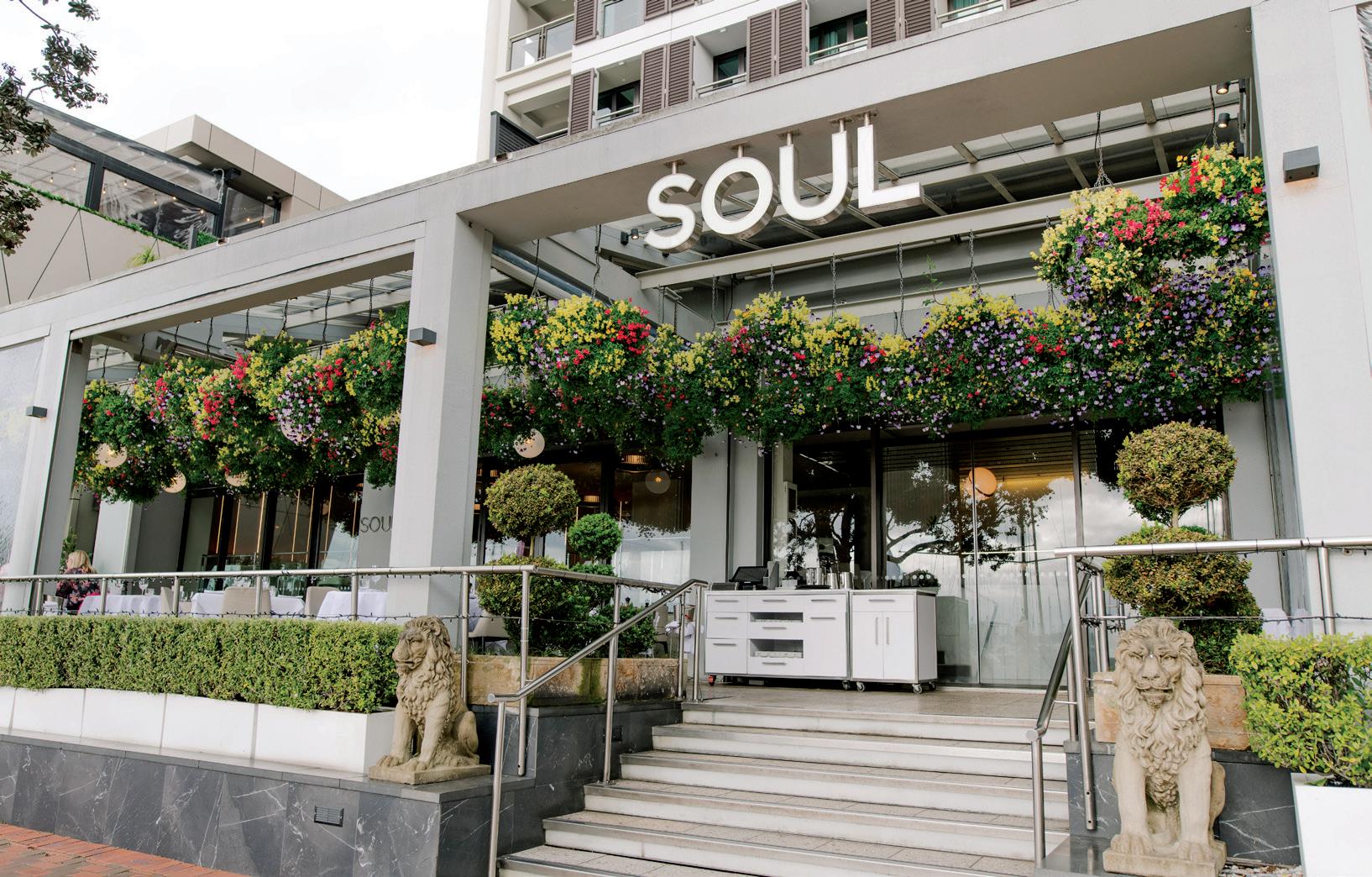

Bar Manager
SOUL BAR & BISTRO
Soul Bar & Bistro, renowned for its high-end dining experience featuring fresh oysters and an ocean view, is now facing a new trend.
Katie Cramphorn, Soul’s esteemed bar manager, has observed a surge in the sober-curious movement, with more customers than ever requesting non-alcoholic pairings alongside their meals.
This shift in customer preferences has allowed the restaurant and bar industry to adapt menus and cater to this growing demand.
“It’s easy to see that bartenders are now putting in as much time and creativity into their non-alcoholic drinks programme as they do with their standard cocktails,” said Cramphorn.
In her role at Soul, Cramphorn leads the team of young bartenders to create delicious cocktails for various events and activations. Due to the rise in nonalcoholic patrons, this has also meant an extension of its alcohol-free offerings.
All the zero-alcohol cocktails at Soul have a flavour profile similar to alcoholic drinks due to the use of faux spirits and tart syrups.
“We put the same amount of effort into creating our non-alcoholic cocktails as we do to our regular cocktails so everyone can feel included in the party,” expressed Cramphorn.
When asked what her favourite zeroalcohol drink was, Cramphorn said it was the Un-American, a twist on the Americano, a classic cocktail. The Un-American combines Italian orange and Aperitif Rosso with tonic water and olives. Its bittersweet yet refreshing element will take consumers to an Italian balcony on a sunny afternoon.
Another notable mention was The

Sweetest Thing cocktail, a new addition that has become extremely popular within the Soul community. The drink combines spiced cane spirit, strawberry, lychee, lemon and whites to create a sweet yet tart drink that is an excellent substitute for a traditional cosmopolitan.
“Previously, the non-alcoholic section of a drinks menu may have only included juice, sodas and mocktails that follow the usual fruit-syrup-soda formula,” said Cramphorn.
“There is now so much variety in the non-alcoholic spirit range that adds complexity and nuance to what you’re drinking; we can recreate almost any cocktails to be enjoyed in a nonalcoholic fashion.”
Moving forward, the team at Soul have set sights on expanding its range of nonalcoholic options, moving away from summer cocktails to winter beverages. With the evolving market of nonalcoholic spirits, wine, and beer, Soul will continue to put effort into catering to a sober, curious community.

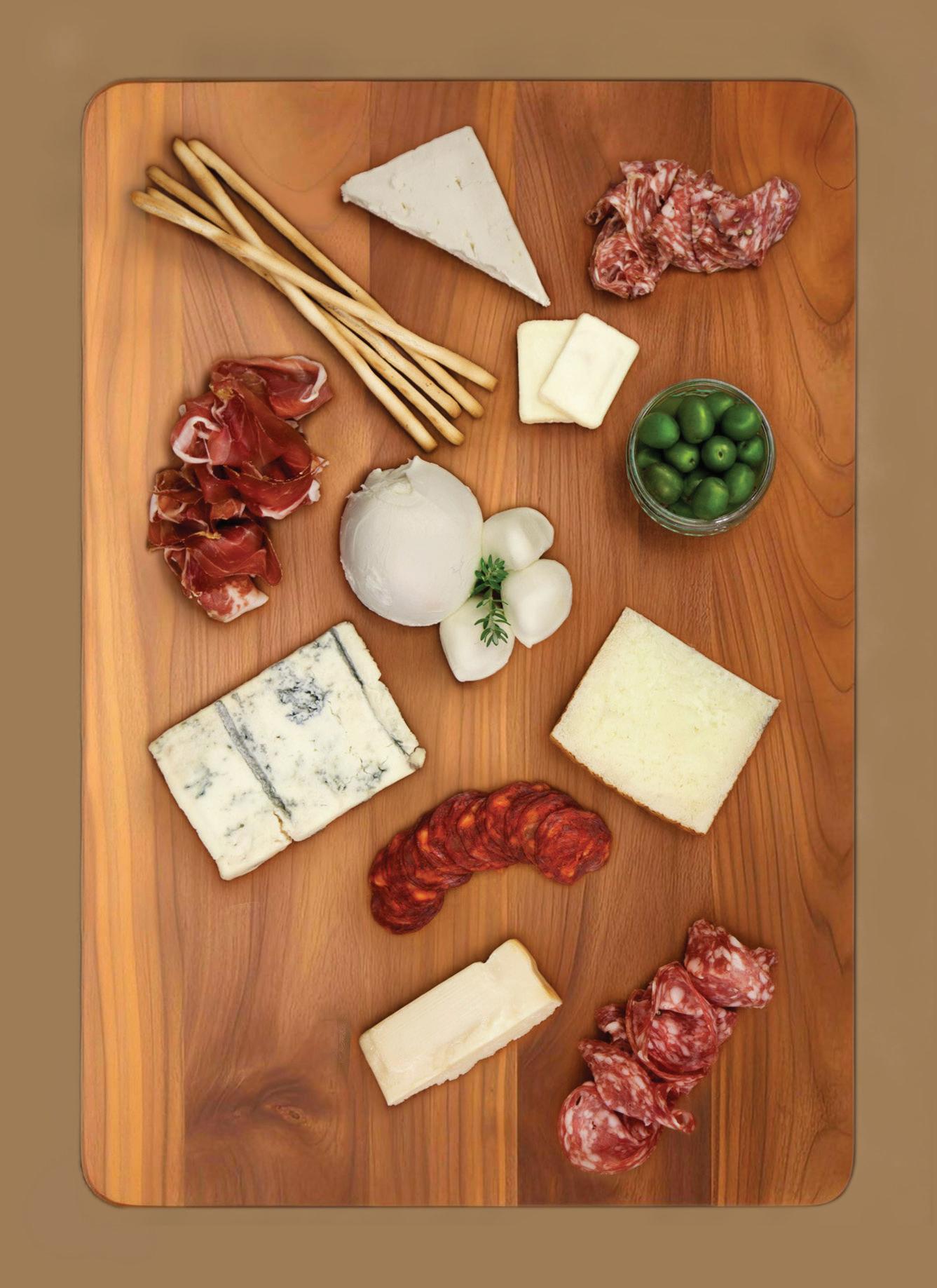



Bartender ONSLOW
Drawing influence from London and New York while showcasing the best flavours of New Zealand, Onslow is a sophisticated yet relaxed bar and restaurant.
Taidhg Fraser, bartender at Onslow, has observed the recent popularity of nonalcoholic beverages and has assisted in creating a wealth of delicious alternatives for sober patrons.
At Onslow, most of its zero-alcohol range are variations of classic cocktails presented in an elevated way. They are primarily made with non-alcoholic spirits, ranging from Lyre’s “tequila” to Pentire’s “gin.”
“Using these mock spirits provides a solid base flavour and similar structure to
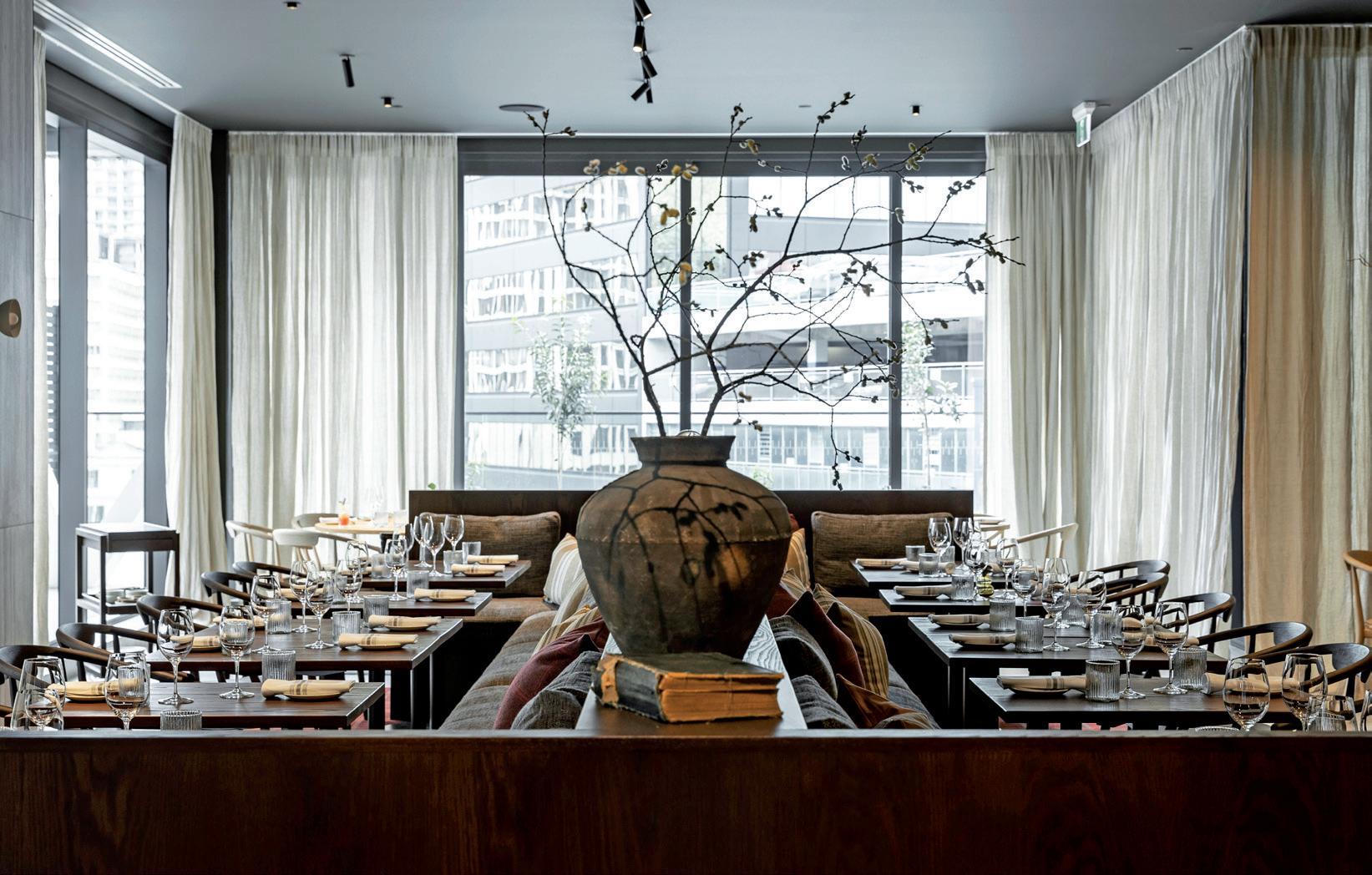
their alcoholic alternative,” said Fraser.
“It’s delightful to create drinks that fit this identity and present guests with a classic cocktail or flavour we have put our take on.”
When asked what made these zero-alcohol spirits such a great option, Fraser narrowed it down to the distilling techniques used by the producers. Less sugar is also used in both production and Onlow’s development of mocktails, with a focus on natural ingredients that are healthier and tastier.
Alongside mocktails, Onslow has noticed a rise in zero-alcohol beer and wine consumption. Bare Beer from Sawmill has become one of the most popular beverages, using low-fermentation techniques and concentrated natural flavours to replicate the taste of alcohol.
One of the main reasons behind

consumers giving up alcohol is for health, meaning that mocktails and drink alternatives must stray away from lots of added sugar and colouring to remain appealing.
For producers, there is a greater interest in using natural ingredients to mimic the flavour profile of alcohol within these drinks rather than removing the dry and bitter taste altogether.
With Dry July approaching, Onlsow has promised an expansion of its nonalcoholic offerings.
“We are looking to reach out to some new suppliers to help them develop new products that can help us grow our range,” said Fraser.
“We want to present non-alcoholic drinks in an interesting and elevating way that is approachable to our customers.”
Fraser has witnessed increased requests among consumers for Asianinspired flavours such as yuzu. Spices such as cinnamon and basil, cherry, orange, and grapefruit, have also surged in popularity.
When asked about alcohol-free drinks and what he would recommend to customers, Fraser said that the Clover Club, which uses Seedlip Spice 94, Lyre’s Aperitif Rosso and the house-made Strawberry and Lemon Oleo, is a delicious, citrus-driven concoction.
Onslow prides itself on its highly skilled bar team, which experiments with new flavour profiles and creates perfectly tailored drinks for its customers. Fraser encouraged those who have gone alcohol-free to explore Onslow’s range, stating that there is no need for a customer to feel compromised because of their decision.

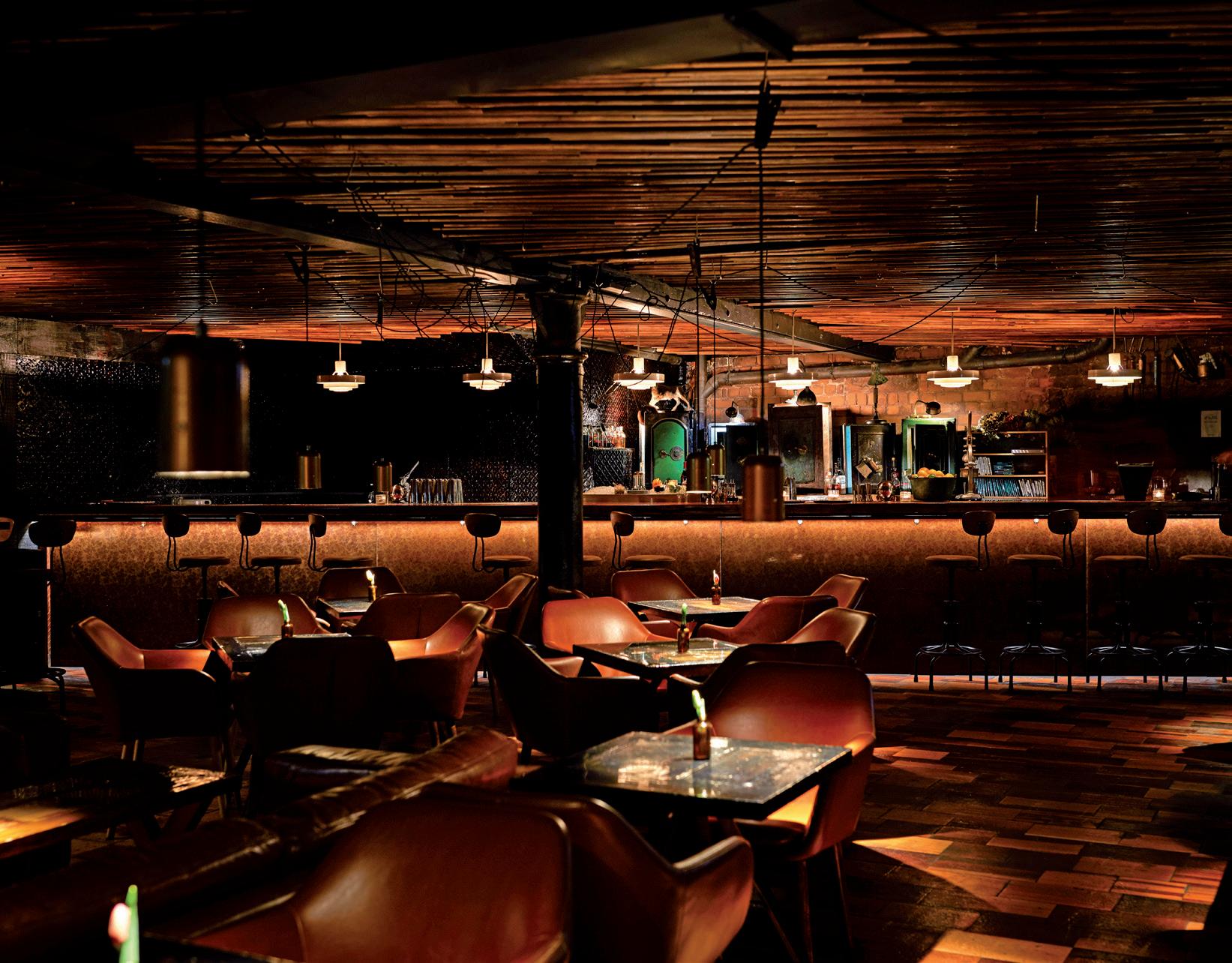

Brad Power Bar Manager CARETAKER
Whether a customer is the designated sober driver or has remained firm on their alcoholfree journey, Caretaker offers a unique and enjoyable experience. With no traditional menu, all of the drinks are created based on the customer’s ideal flavour profile.
Brad Power, bar manager at the New York-style cocktail lounge Caretaker, has accumulated a vast knowledge of flavour combinations and ability to make something for everyone.
From a range of delicious mocktails to sparkling water, Power has enjoyed creating alcohol-free alternatives for everyone.
Instead of substituting alcohol for faux spirits in a mocktail, Caretaker use fresh-pressed juices, which add extra flavour and natural sugars and vitamins.
“Our mocktails tend to have the
same flavour profiles as cocktails, going from fruity and refreshing to savoury and spicy if that’s what you are after,” said Power.
“They differ from standard soft drinks because each drink has been carefully crafted and made for you based on what flavours you are craving.”
The bartending industry constantly changes, with new trends and flavours emerging each season. To stand out, the team at Caretaker is constantly seeking out new seasonal fruits or innovations that can give its mocktails that competitive edge.
“Mocktails are generally better for you and won’t leave you feeling rough the next day,” he said.
“The more people see what can be done with mocktails, the more they’ll be ordered from bars.”
With mocktails and other alcoholfree alternatives rising in popularity, distillers and breweries have sought out innovations for sober communities. Power listed the rise in zero-alcohol spirits, specifically amaro, as a critical innovation he is excited to see develop.
In anticipation of Dry July, Power expressed an interest in expanding Caretaker’s alcohol-free offerings and the potential of incorporating spirit substitutes into the mocktail menu.
“Getting spirit substitutes is definitely being spoken about, so we can explore different avenues with our non-alcoholic options,” he said.
Caretaker’s ability to adapt to fit consumer preferences has created a well-loved, inclusive and pleasurable bar.

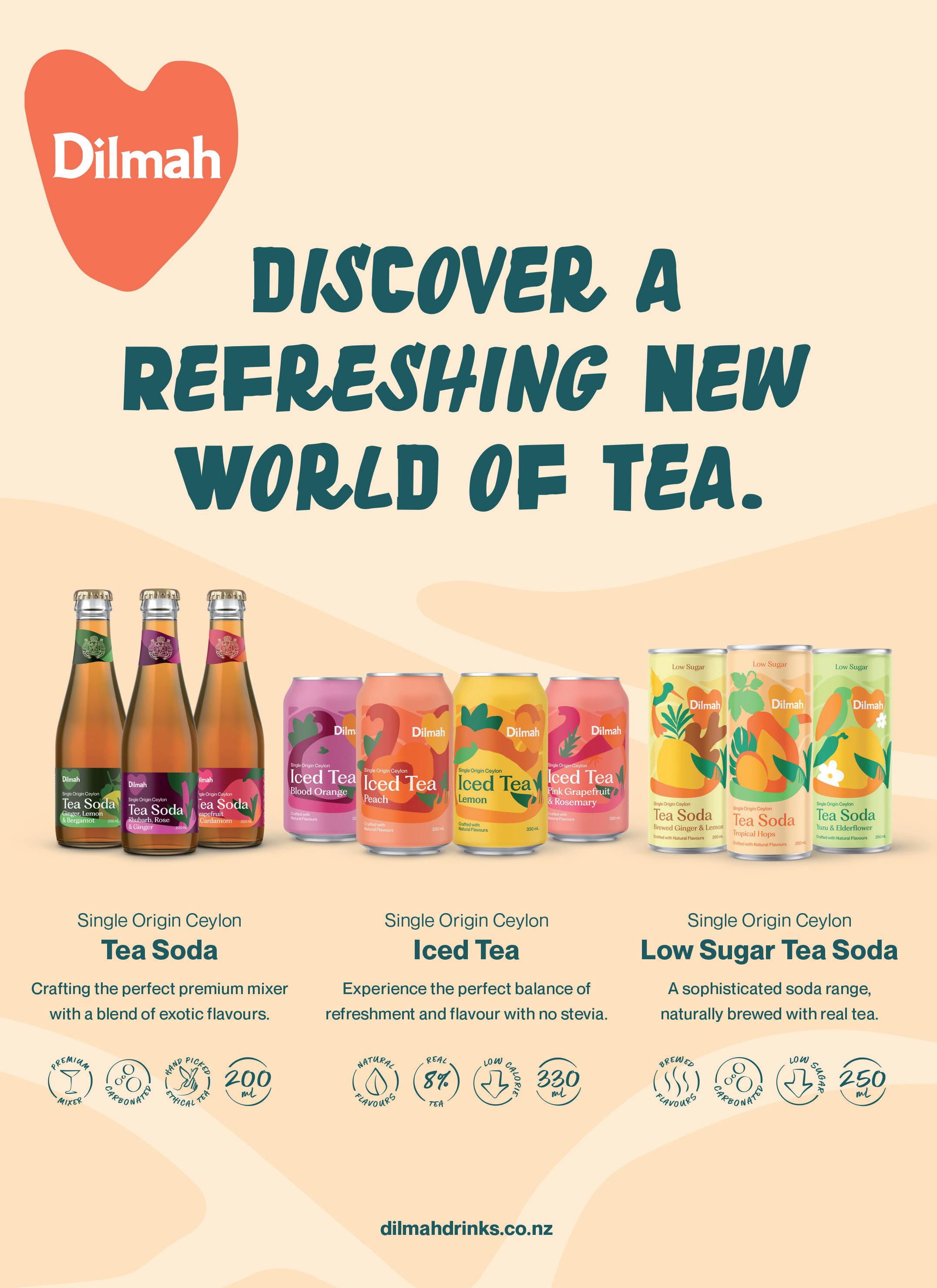

Venue Manager ROCKETMAN
Rocketman, a whimsical party bar in the heart of Auckland, has delved into the world of alcohol-free drinks, expanding its offerings to meet consumer demands.
In a place where mischief and madness know no bounds, the team at Rocketman believe in having a good time, whether prompted by a cocktail or a mocktail.
Vince Schiller, venue manager at Rocketman, has curated a delicious selection of alcohol-free offerings that explore complex flavours.
When asked about the importance of providing zero percent drinks, Schiller elaborated on the importance of recognising the need for more alcohol alternatives.
“We are conscious of the fact that some people want to go out and have a good time without drinking,” said Schiller.



“It was important to us to make sure that we could provide something tasty and enjoyable while being alcoholfree.”
Many of Rocketman’s mocktails are based on classic cocktails, with fresh ingredients setting them apart from classic RTDs. Although they don’t have the same bite as alcoholic drinks, Rocketman aims to offer complexity and balance.
To ensure its products maintain taste and quality while remaining a ‘better’ alternative, Schiller has focused on making fresh, made-to-order drinks that pack just as much flavour as a standard cocktail.
“I think the industry in general is starting to focus less on something that mimics flavours of alcohol and more on creating unique and tasty products that can stand out on their own,” added Schiller.
“That’s where I think the future of non-alcoholic beverages is: playing into a product’s strengths, not trying to be something it’s not.”
Rocketman is known for its innovative approach to the stereotypical bar scene, offering a retro environment with a lively music scene. Regarding its menu, the non-alcoholic plum wine from Heiwa Brewery is the perfect pairing for alcohol-free communities.
Looking forward, Schiller expressed interest in the unexplored world of amari and aperitifs.
“There are so many wonderful lowalcohol offerings with soda, a spritz, or some fresh juice. Take Cynar, for example. It’s a wonderful Italian amaro made with artichoke leaves,” he said.
“Just a shot of it in a tall glass with soda goes a long way, packs a lot of flavor, and in terms of alcohol content, it is very close to a low-abv beer.”
Due to growth within the nonalcoholic community, Schiller and the team at Rocketman will continue to expand into the zero-alcohol market, designing delicious alternatives for consumers.






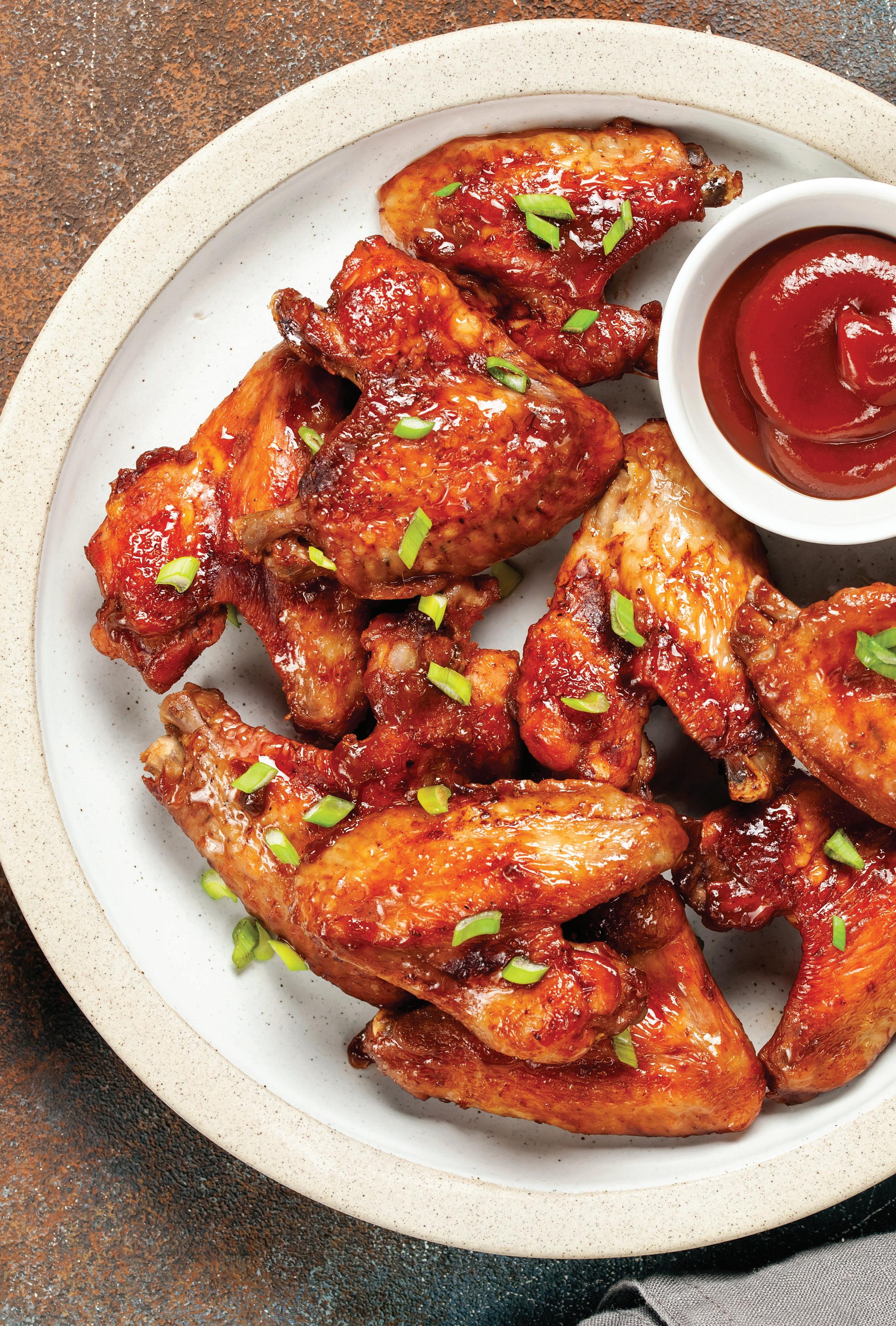

Martyn Holloway
Bar Manager ACS
Cocktail making is an art, but with the burgeoning number of alcohol-free consumers, bars like ACS are compelled to adapt swiftly to stay afloat.
Martyn Holloway, bar manager at ACS, has seen almost everything the industry has to offer. From dealing with late-night rushes to designing new drinks on demand, Holloway is well-versed in overcoming complications.
With the rising trend of alcoholfree drinks, ACS has witnessed a new obstacle: creating beverages that share a similar flavour profile without the strong and familiar taste of alcohol. Due to the intense taste of gin, vodka and other straight liquors, mocktails can often need more depth.
At ACS, Holloway identified this challenge and devised a tasty alternative for sober consumers.
“Our zero-alcohol cocktails are best generalised as a mixture of a fruitforward syrup or puree, a citrusy cordial, and an unusual, dry soda,” said Holloway.
“The complex aromas of herbs and spices complement these.”
They contain much less processed sugar than regular sodas and are often dry in flavour, requiring them to gain sweetness from ACS’s homemade cordials and extracts.
The mocktails also don’t stint on aesthetics. These brightly coloured drinks are served in beautiful glassware and garnished with fresh

fruit, allowing customers to join the crowd without feeling isolated by their lack of beverage.
When asked what his favourite nonalcoholic beverage was, he said the gimlet, a traditional juniper gin-based drink served with homemade lime cordial. To make this zero alcohol, he substituted the gin with a zero percent gin, making it a delicious drink with a similar flavour profile.
“A non-alcoholic gimlet keeps even the most perverted, alcoholic bartender happy,” said Holloway.
ACS has built a loyal customer base due to its vast majority of events and bespoke cocktail service. It is
a popular spot for corporate and personal events due to its upbeat vibe and plush game room with an American pool table and retro arcade machines.
With every iteration of ACS’s menu, the bar increases the real estate taken up by low and no cocktails. Holloway confirmed that their alcohol-free offerings will soon increase, providing sober customers with a welcoming and accepting venue to socialise and dance.


c r e a t e l a s t i n g m e m o r i e s w i t h






Find and Compare
Discover and compare a variety of Japanese Food & beverages at one place.

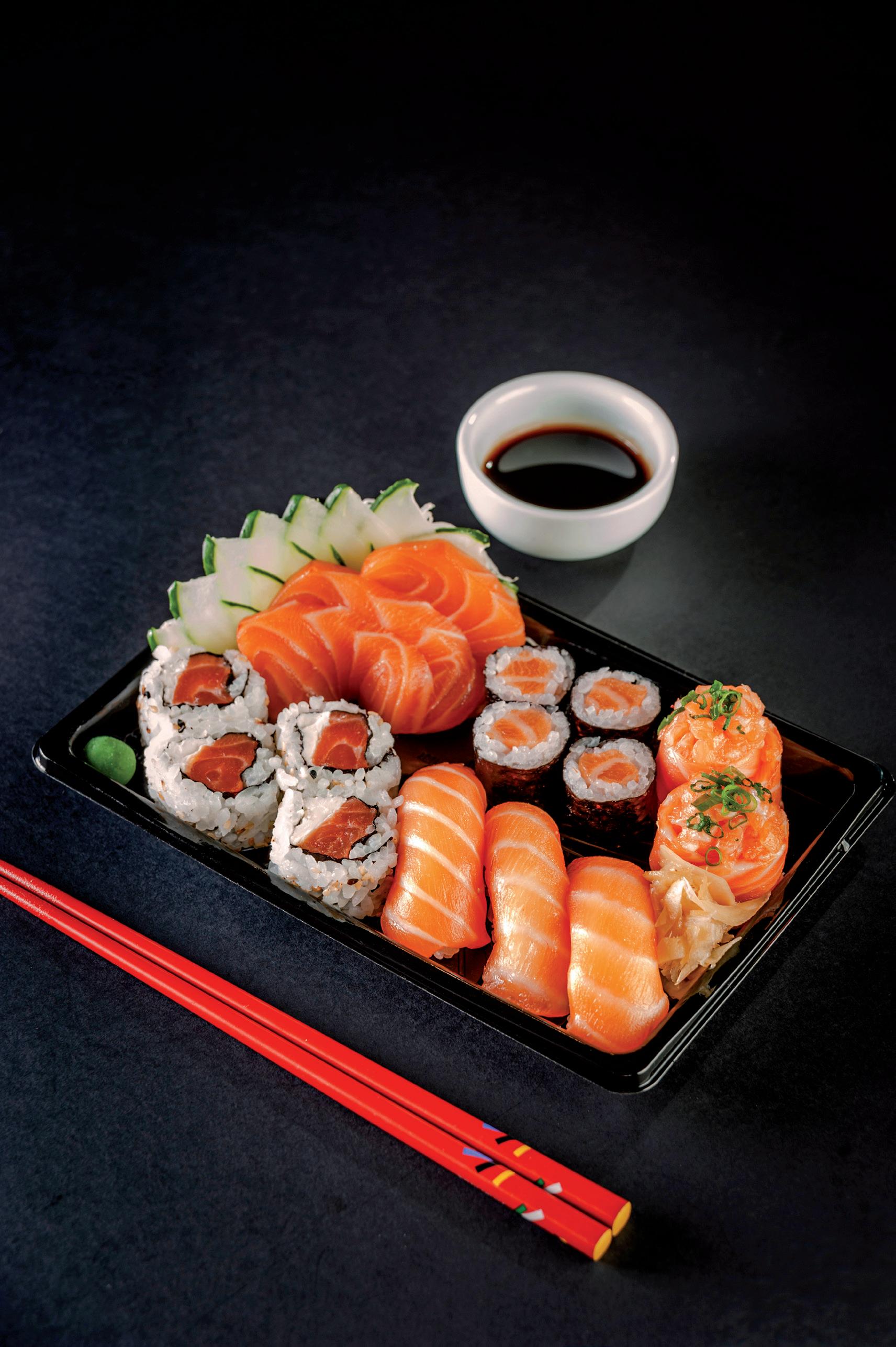
Learn and Catch

Learning the latest industry trends and hot topics for your business development.
Grow your Network
Gathering 900 exhibitors from all over Japan. It is the best venue to find suppliers and potential new businesses.
